- Intoxicating exhaust note
- Handles like it's on rails
- Good value compared to rivals
- Bland dashboard design
- Lacks some features
- Short 10,000km service intervals
We are big fans of a hot hatch here at DiscoverAuto. We love the performance and practicality of them as well as their relative affordability. They’re great all-rounders and they take what we love about regular hatchbacks, but add in some extra fun behind the wheel. We also quite enjoy a special edition vehicle, so when Hyundai released that there was going to be a limited run of special i30 Ns, we got rather excited. We tested the 2023 Hyundai i30 N Drive-N Limited Edition to see just how different it is to to the regular model.
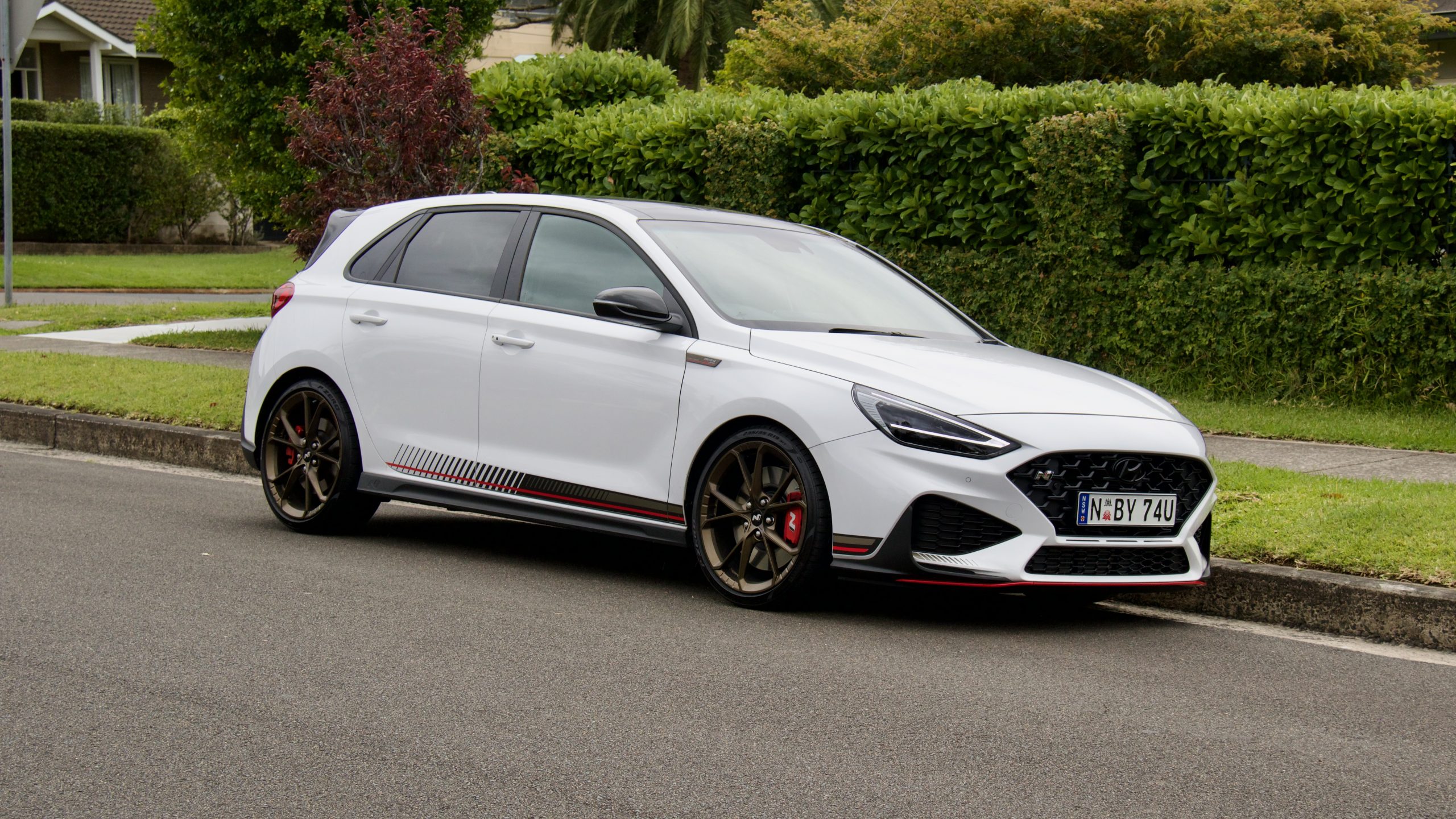
What sets the Drive-N apart from the regular i30 N are its decals and interior trimmings – there are no mechanical differences between the i30 N Premium and the i30 N Drive-N. With just 180 units offered in Australia, we’d suggest acting quickly to secure one.
Price & Equipment: 8/10
The 2023 Hyundai i30 N range starts from $46,200 plus on-road costs for the entry level i30 N. Stepping up to the i30 N Premium adds $3,000 (from $49,200 plus on-road costs) and the 2023 Hyundai i30 N Drive-N is based off the N Premium and is priced from $53,200 for the manual and $56,200 plus on-road costs for the dual-clutch automatic that we tested here.
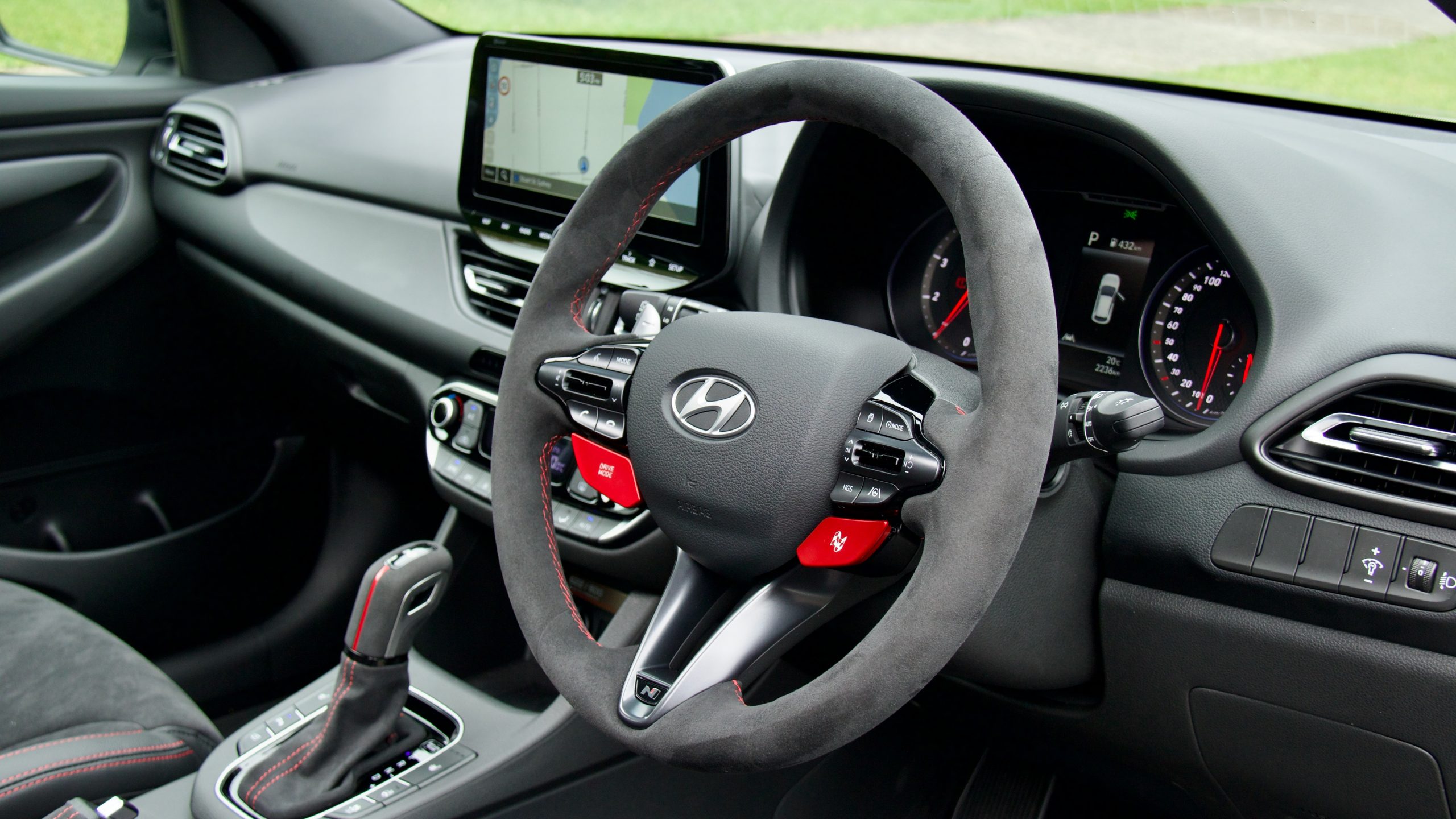
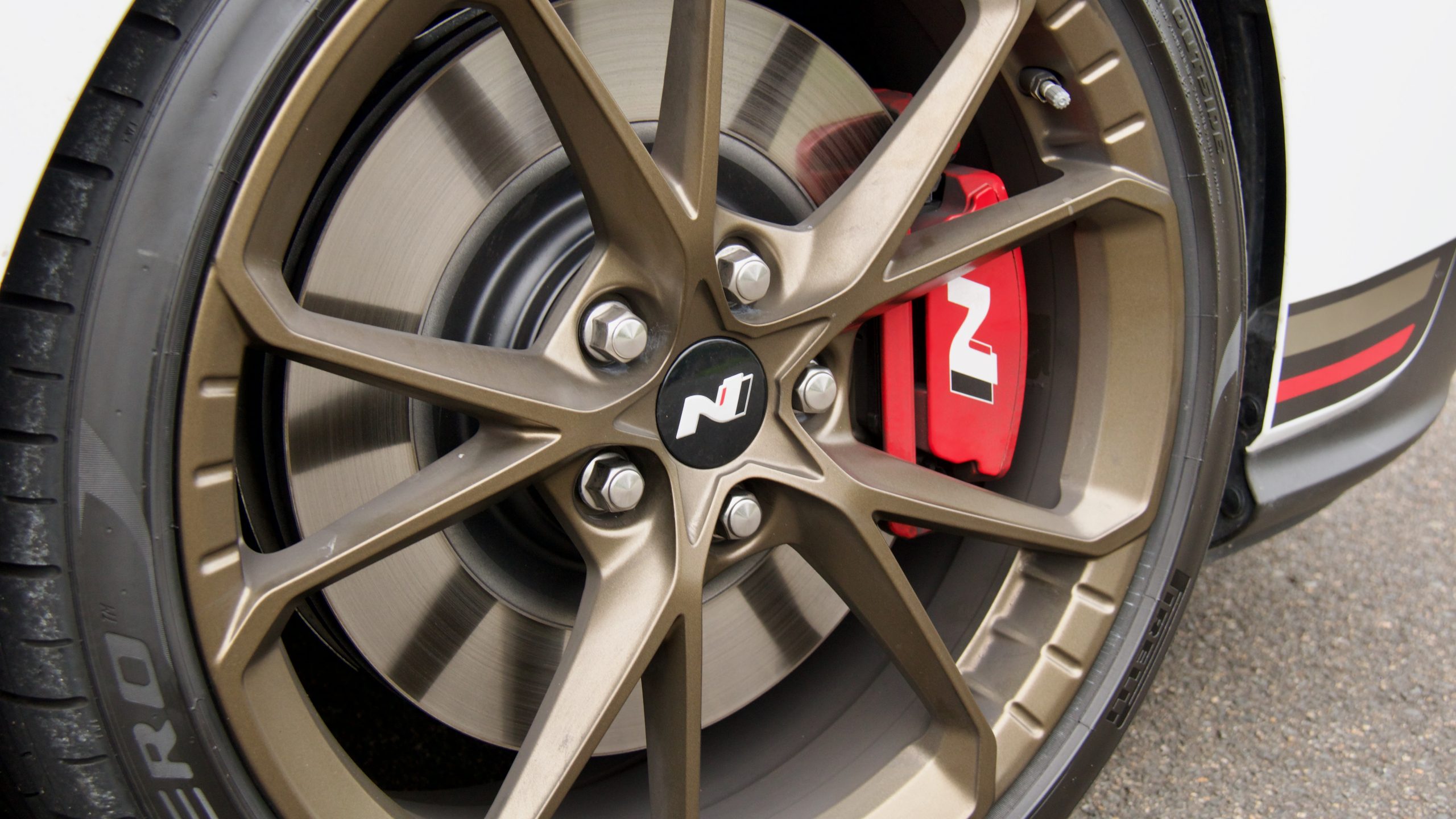
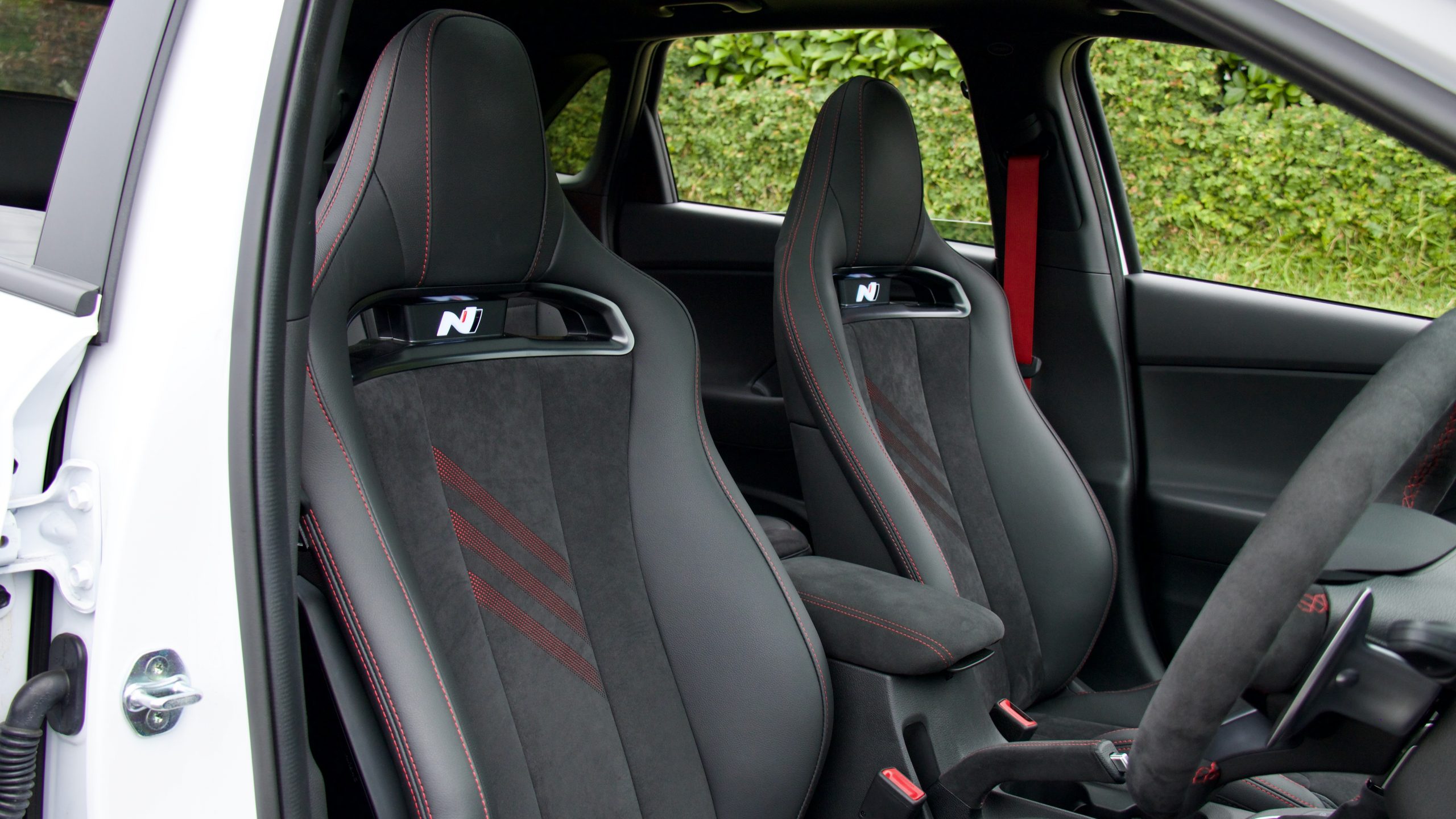
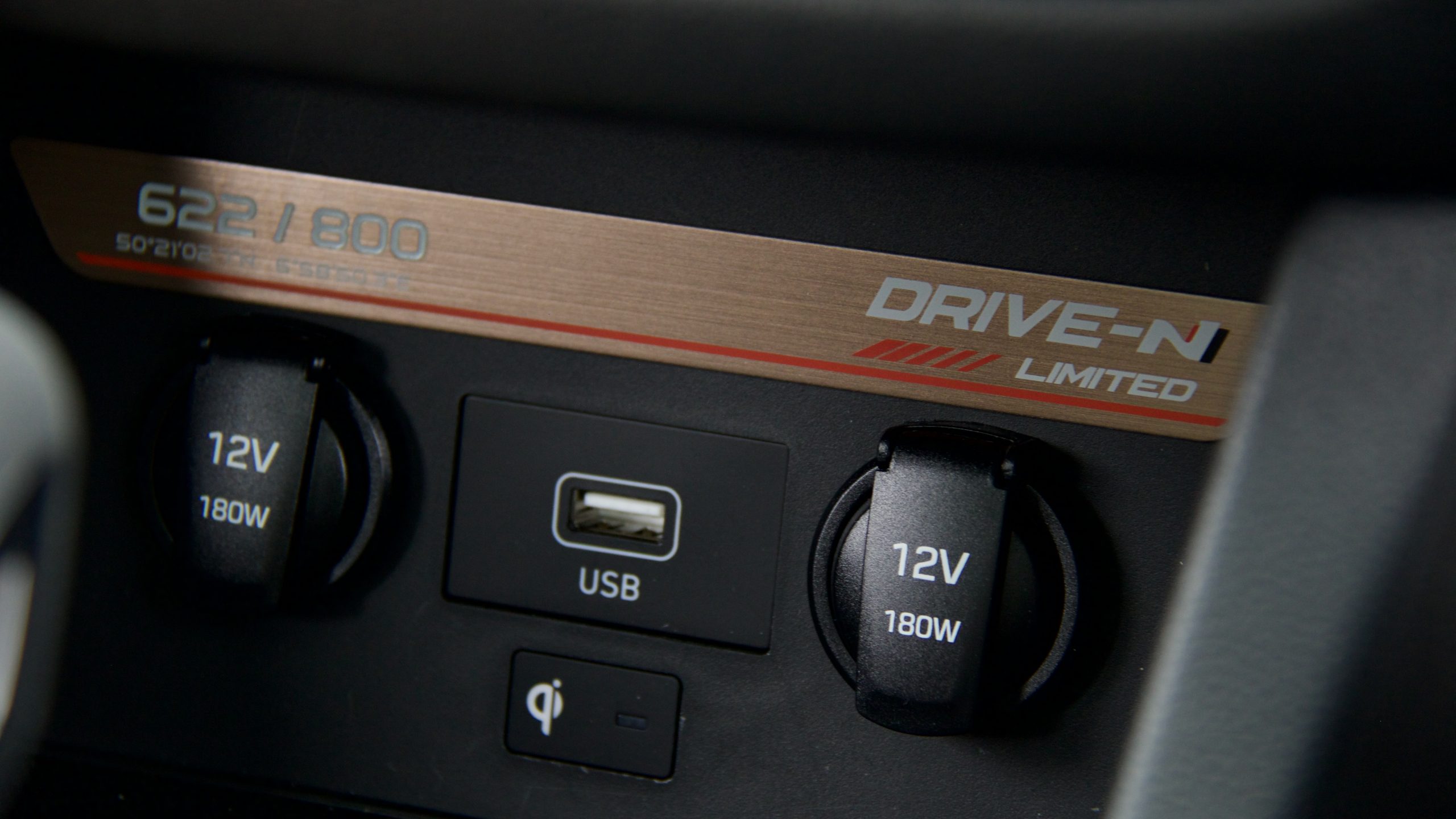
Standard equipment includes 19-inch alloy wheels, adaptive dampers, a 10.25-inch touchscreen with wired Apple CarPlay and Android Auto, satellite navigation with live traffic updates, digital radio, a six-speaker sounds system, keyless entry with push button start, a wireless smartphone charger, automatic LED headlights, auto wipers, cruise control, heated and auto-folding exterior mirrors, dual-zone climate control, leather and suede lightweight bucket seats with an illuminated N logo, rear privacy glass, an auto-dimming rear view mirror, heated front seats and a heated steering wheel.
Safety features include seven airbags, auto emergency braking (AEB) with pedestrian and cyclist detection, blind-spot monitoring with rear cross-traffic alert, driver attention monitoring, auto high beam, lane keep assist with lane departure warning, lane trace assist, an alarm, front and rear parking sensors, a reversing camera, safe exit warning and tyre pressure monitoring. Auto variants like our tester add automatic braking for the blind-spot monitoring and rear cross-traffic alert systems.
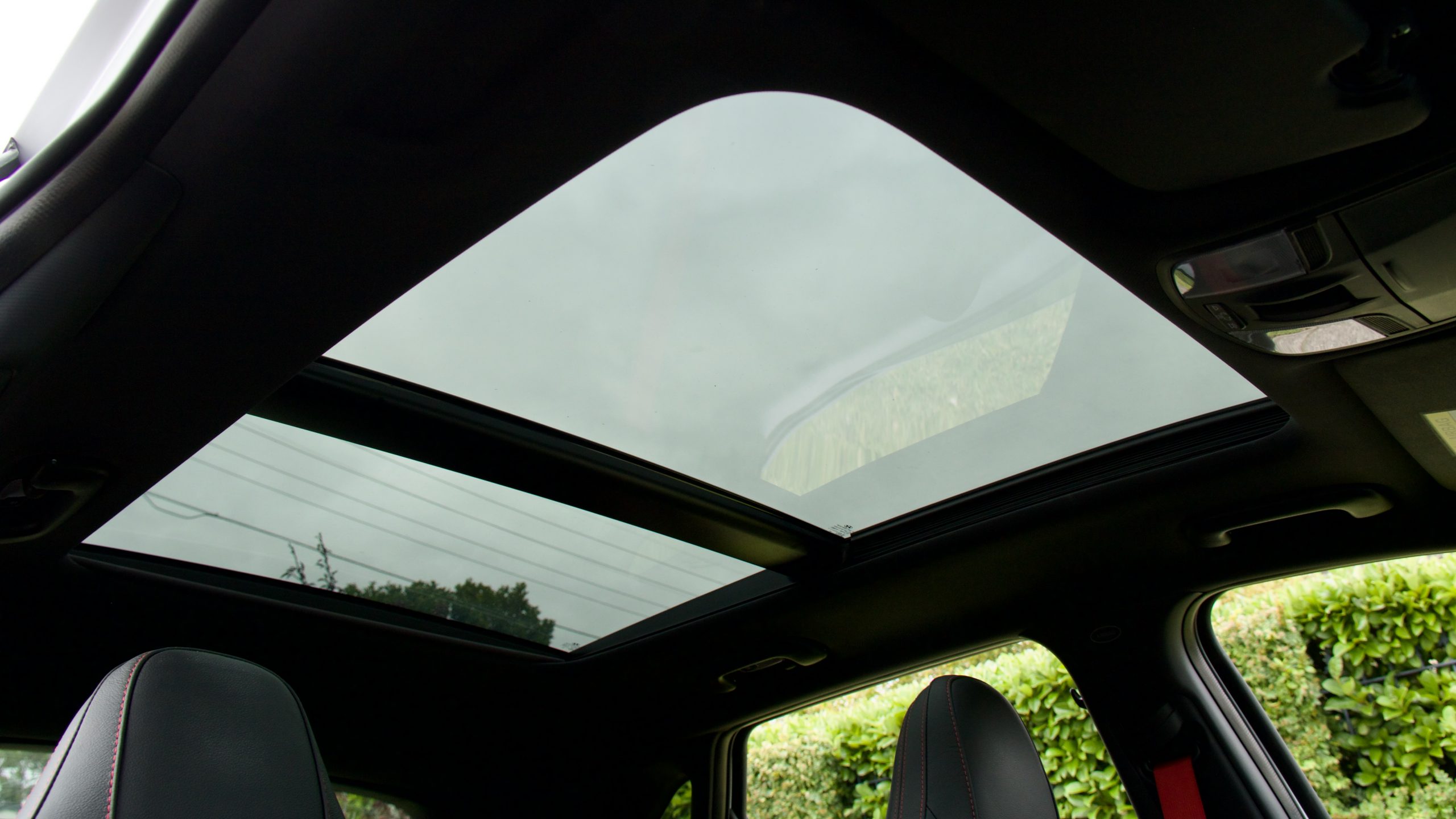
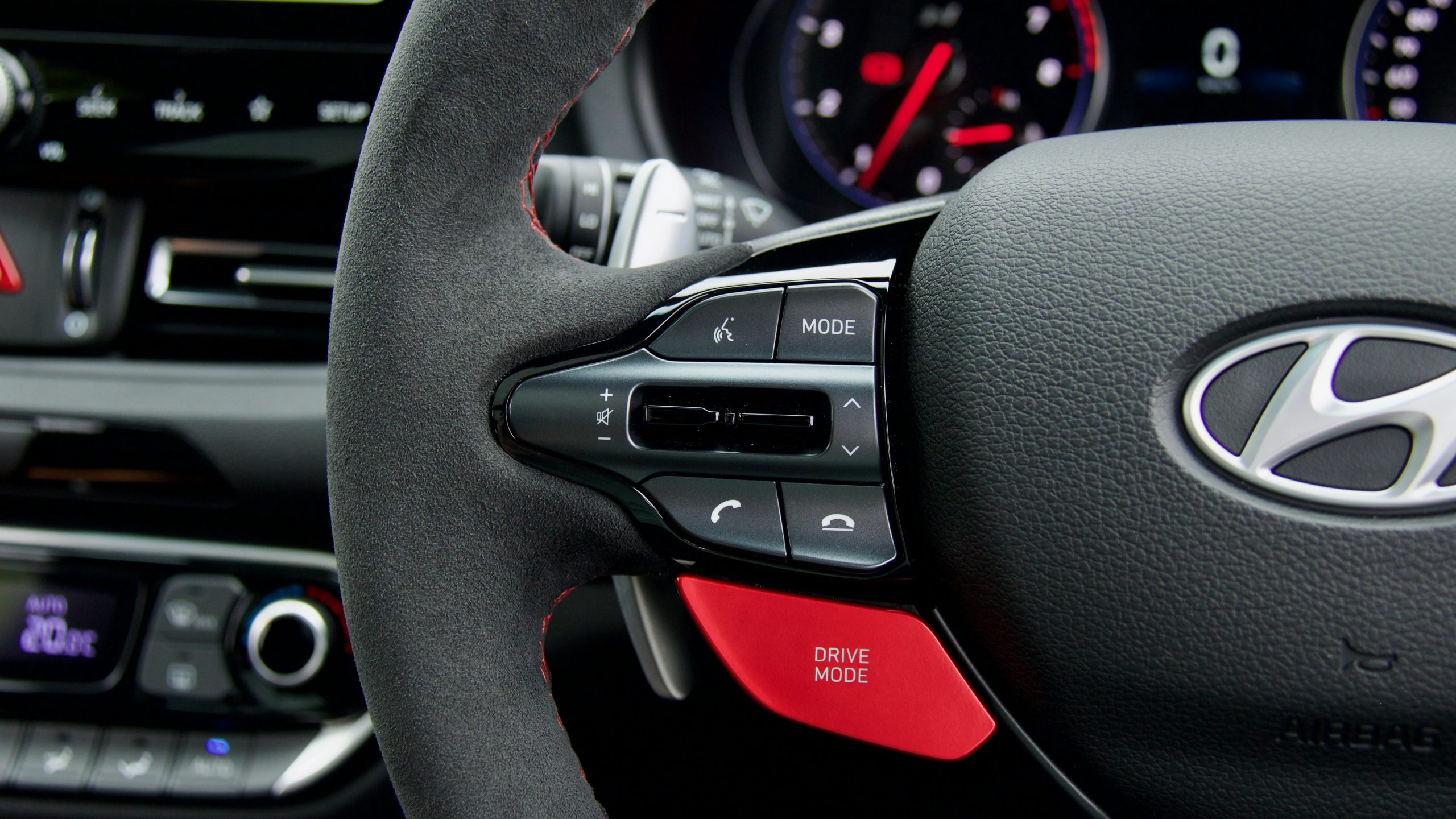
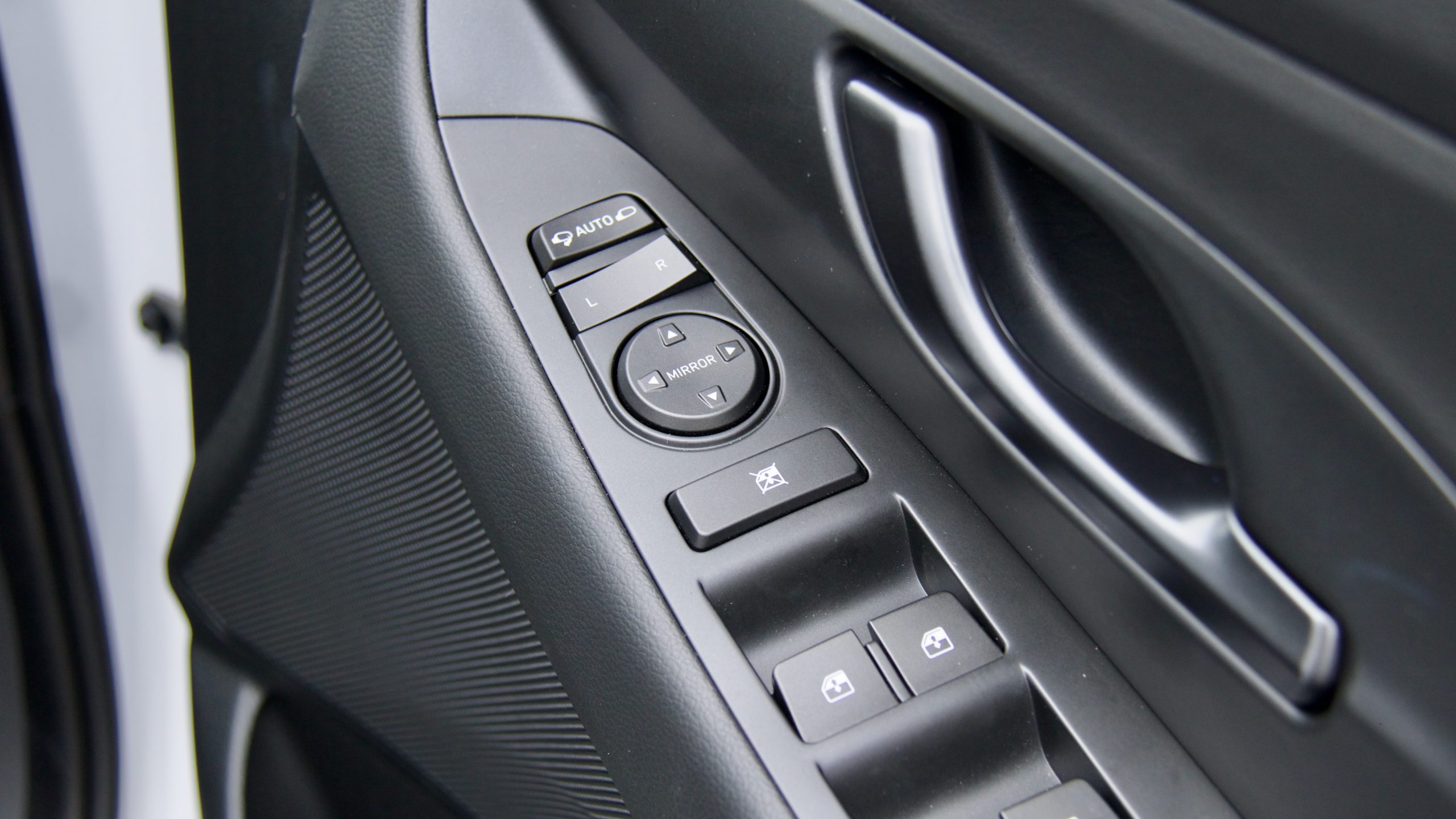
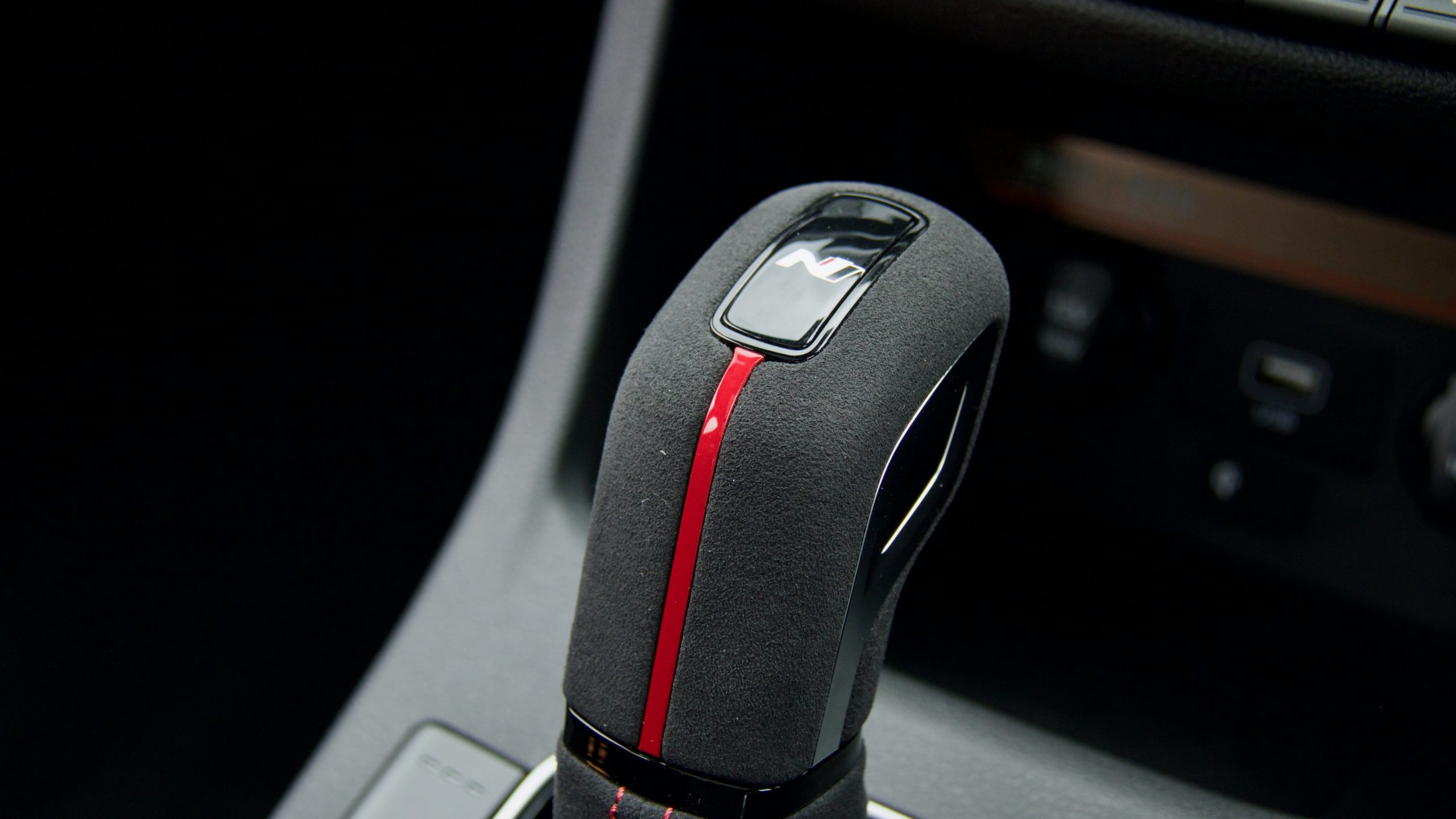
Differentiating the Drive-N and the i30 N Premium are an alcantara steering wheel, an alcantara gear knob and handbrake, an alcantara centre console lid, red stitching to the alcantara seats as well as red stripes and red seat belts, red N Drive mode selector buttons on the steering wheel, Drive N floor mats with red stitching, a plaque that has the car’s build number on it, bronze 19-inch wheels, exterior decals, black badging, and dark bronze Drive-N badges on the front wheel arches with the coordinates of Hyundai’s test centre at the Nurburgring in Germany.
Only two colours are available on the 2023 Hyundai i30 N Drive-N: ‘Phantom Black’ and our test car’s ‘Serenity White’. Ultimately this limited edition is just on the surface, there are no mechanical differences to the Drive-N compared to the normal i30 N, so unless you’re a sucker for a sticker pack, we don’t think the Drive-N is worth the extra money over the regular i30 N. Sadly there are some missing features on the i30 N such as adaptive cruise control, an electric driver’s seat, rear auto braking, wireless Apple CarPlay and Android Auto, a premium sound system and cooled seats all of which we would like to see as standard (especially on a special edition variant). All of these features can be seen throughout the regular i30 range, but unfortunately not on the range-topping performance N variant.
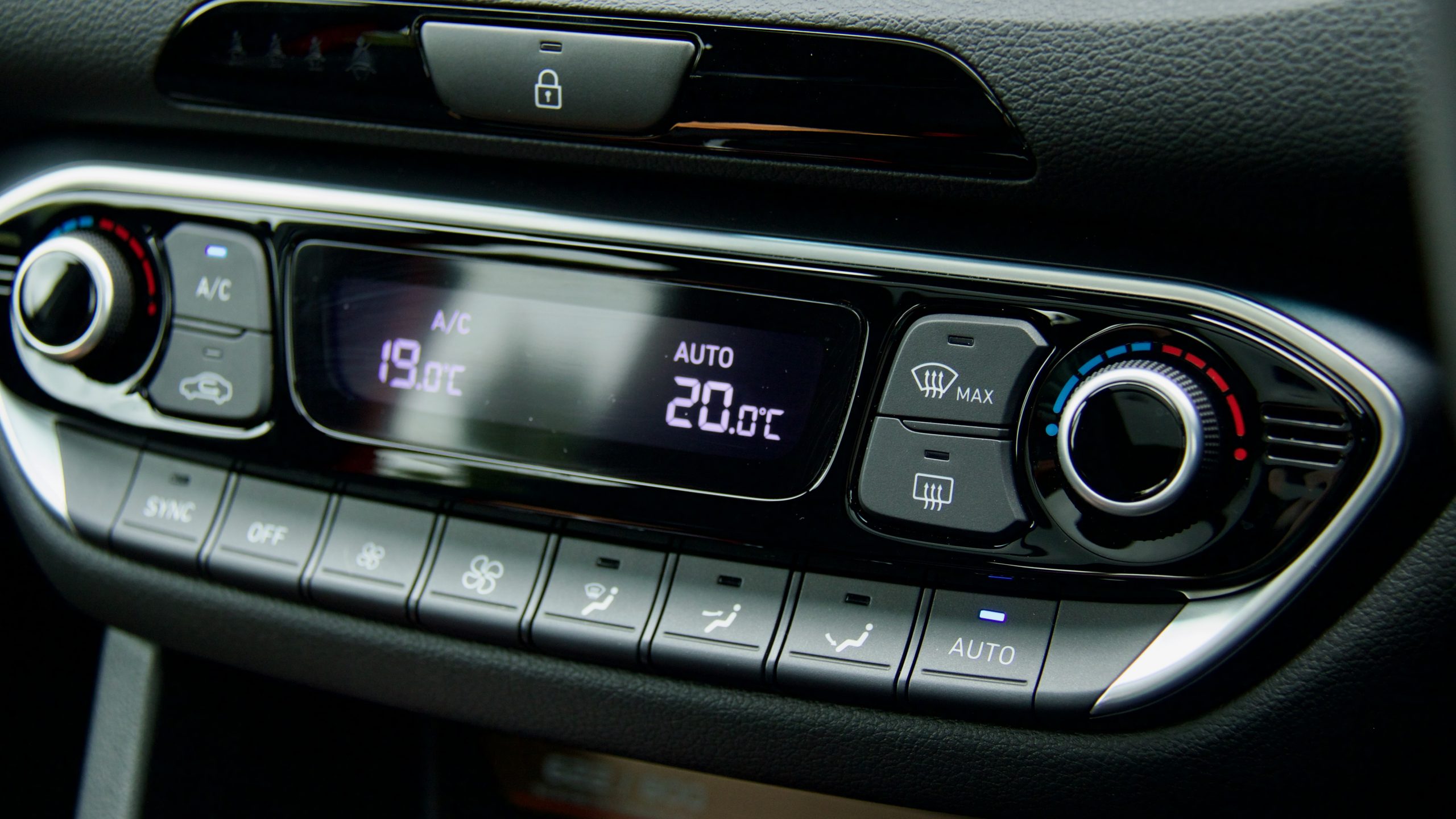
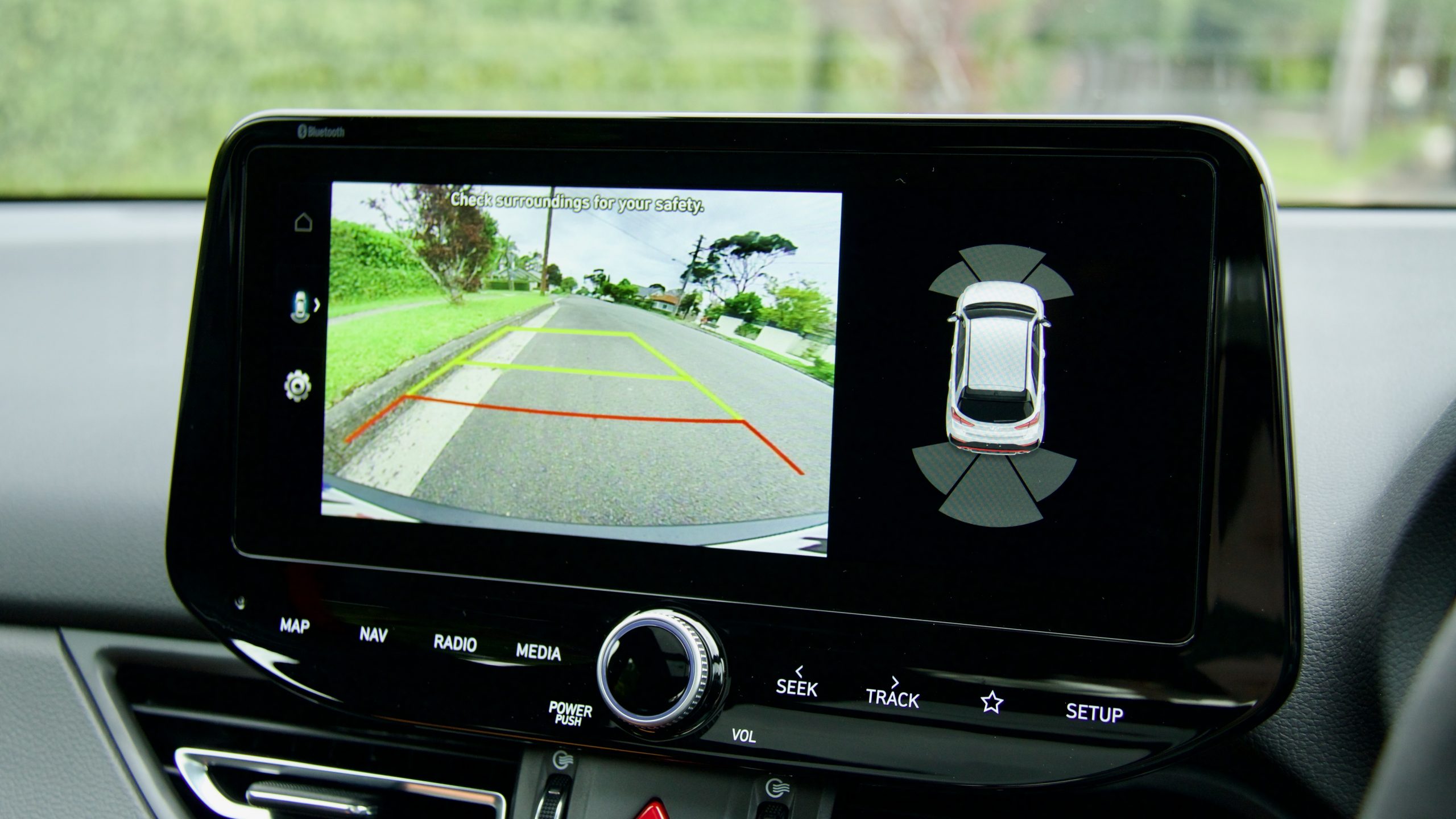
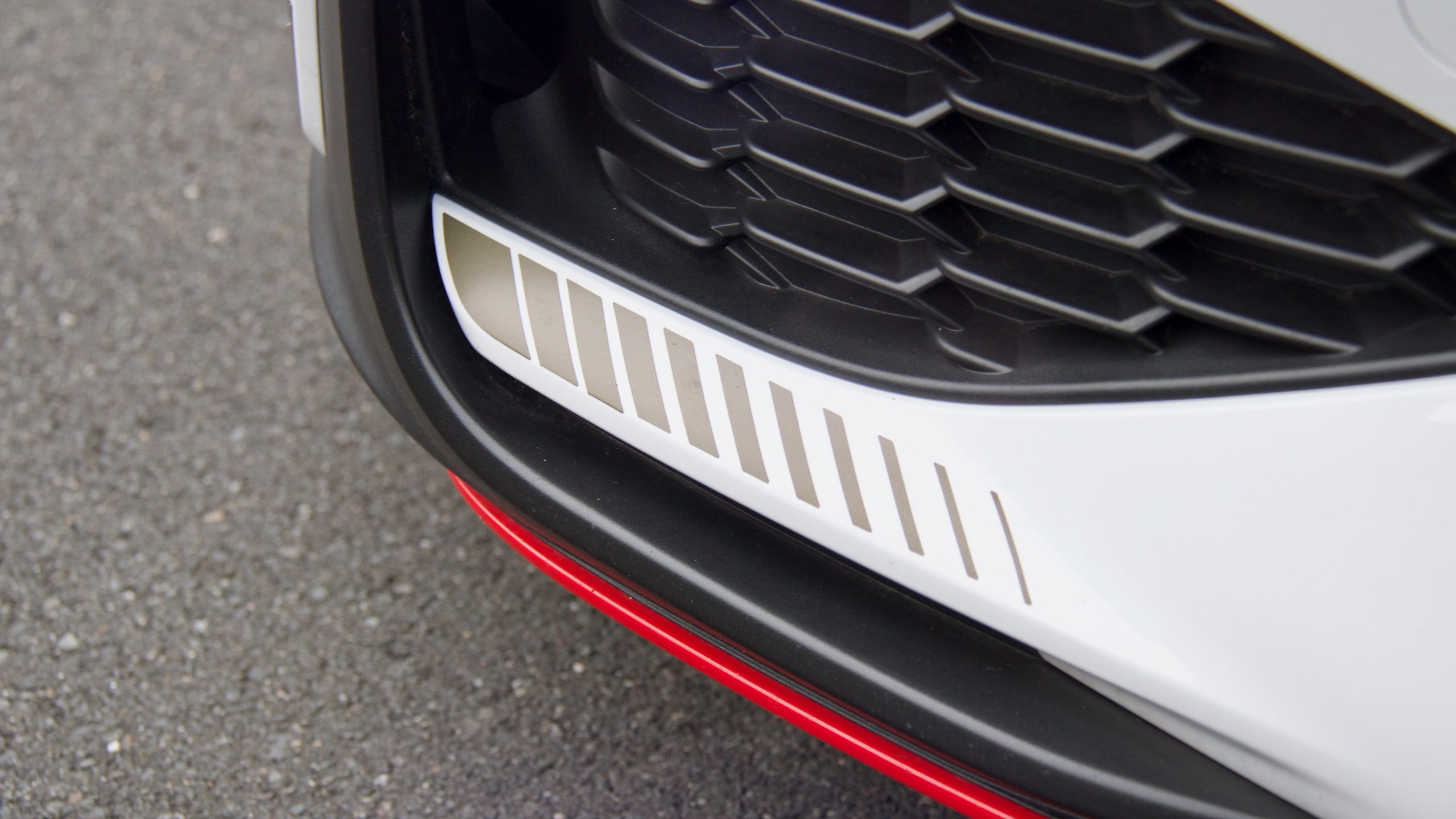
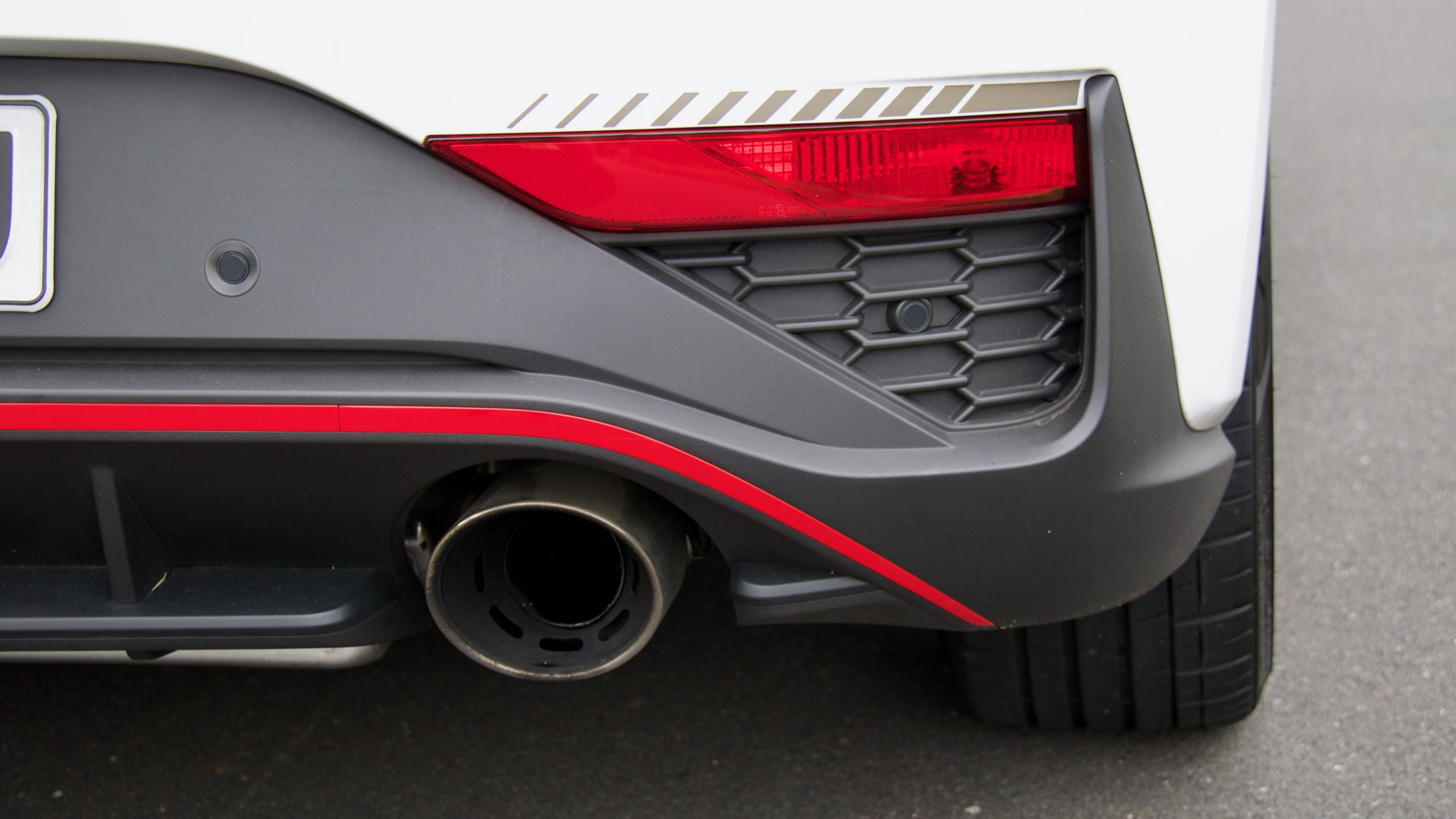
We think that the main rivals to the Hyundai i30 N are the Volkswagen Golf R and Toyota GR Corolla. The Golf R is now auto-only and is priced at $66,990 plus on-road costs, while the GR Corolla costs $62,300 +ORC. Both the Golf R and GR Corolla feature more standard kit than the i30 N Drive-N – both have more airbags, a heads-up display, all-LED lighting and more safety kit. But is that enough to spend the extra money? We don’t think so. Even though the i30 N is no longer the $39,990 +ORC hot hatch bargain it once was, we still think it’s great value for money.
Performance & Economy: 9/10
The engine powering the 2023 Hyundai i30 N Drive-N is the familiar 2.0-litre turbocharged four-cylinder unit that is found in the regular i30 N and Kona N. Producing 206kW of power at 6,100rpm and 392Nm of torque between 2,100rpm and 4,700rpm, the i30 N is a punchy beast. The engine feels like it’s always ready to pounce and there is a sense of urgency about it that other performance engines seem to miss. Very rarely for a turbocharged engine the i30 N’s engine has a surprising lack of turbo lag – no matter where you are in the rev range, if you put your foot on the loud pedal you shoot off into the distance. It’s addictive and brilliant.
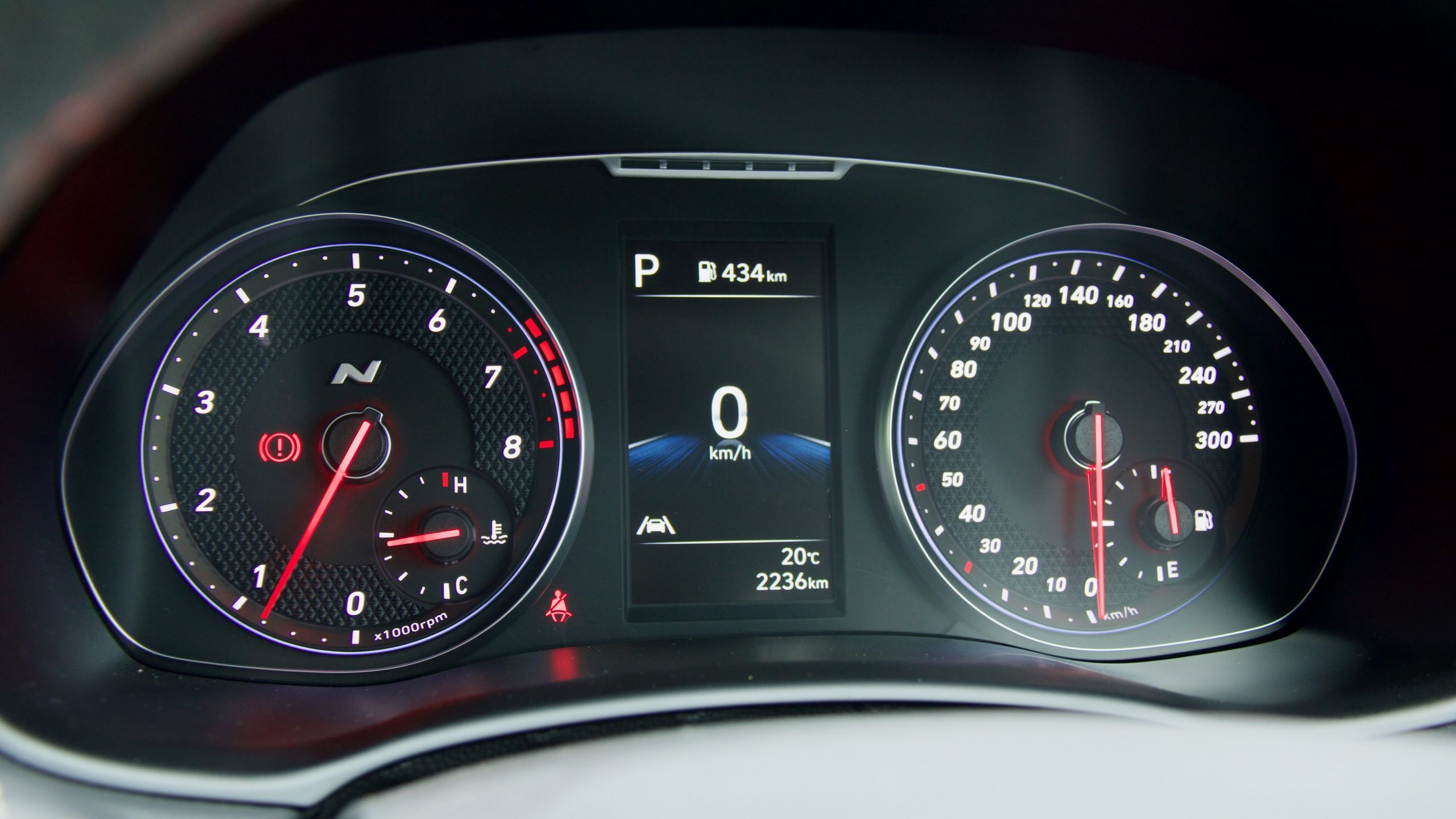
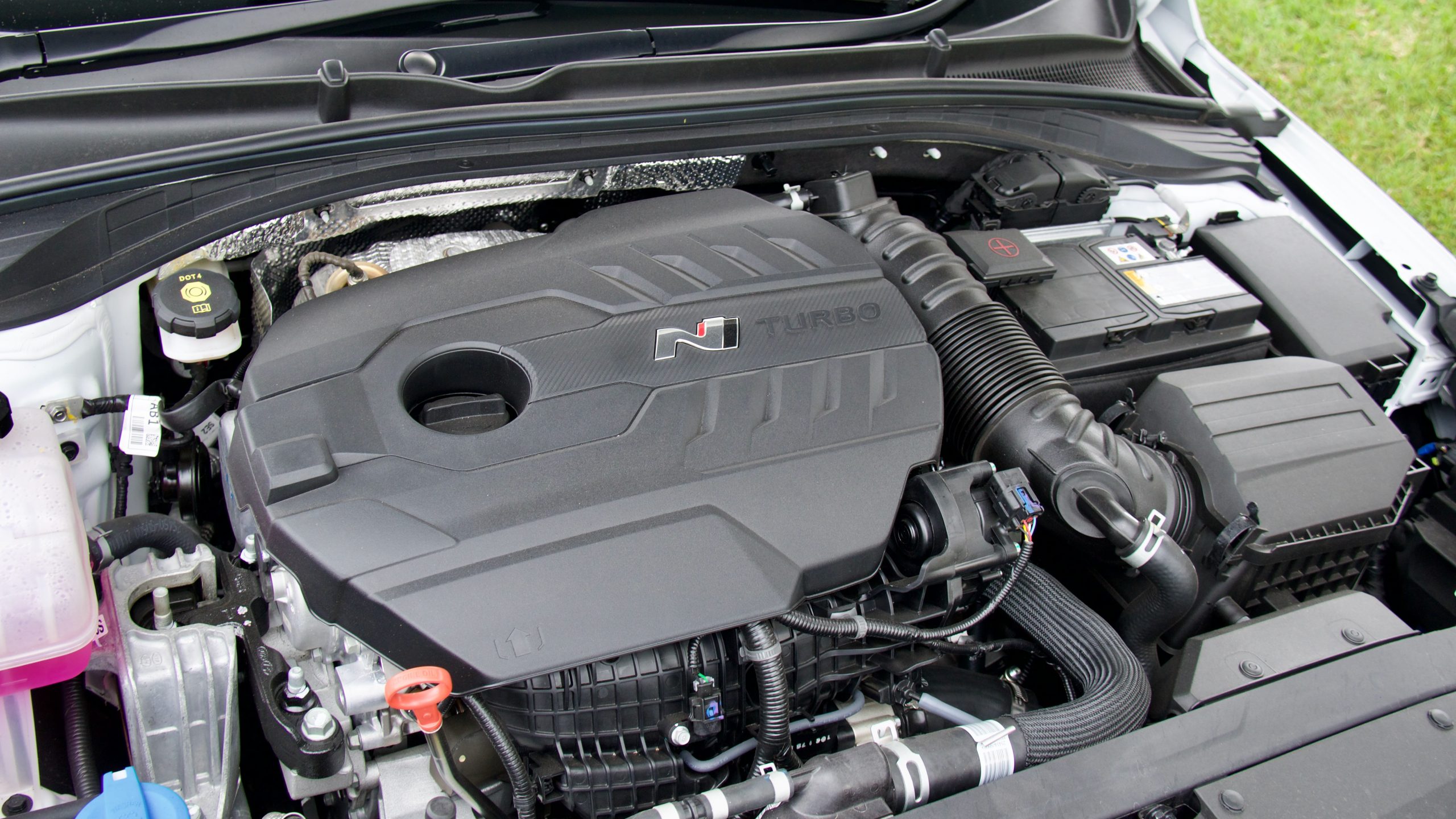
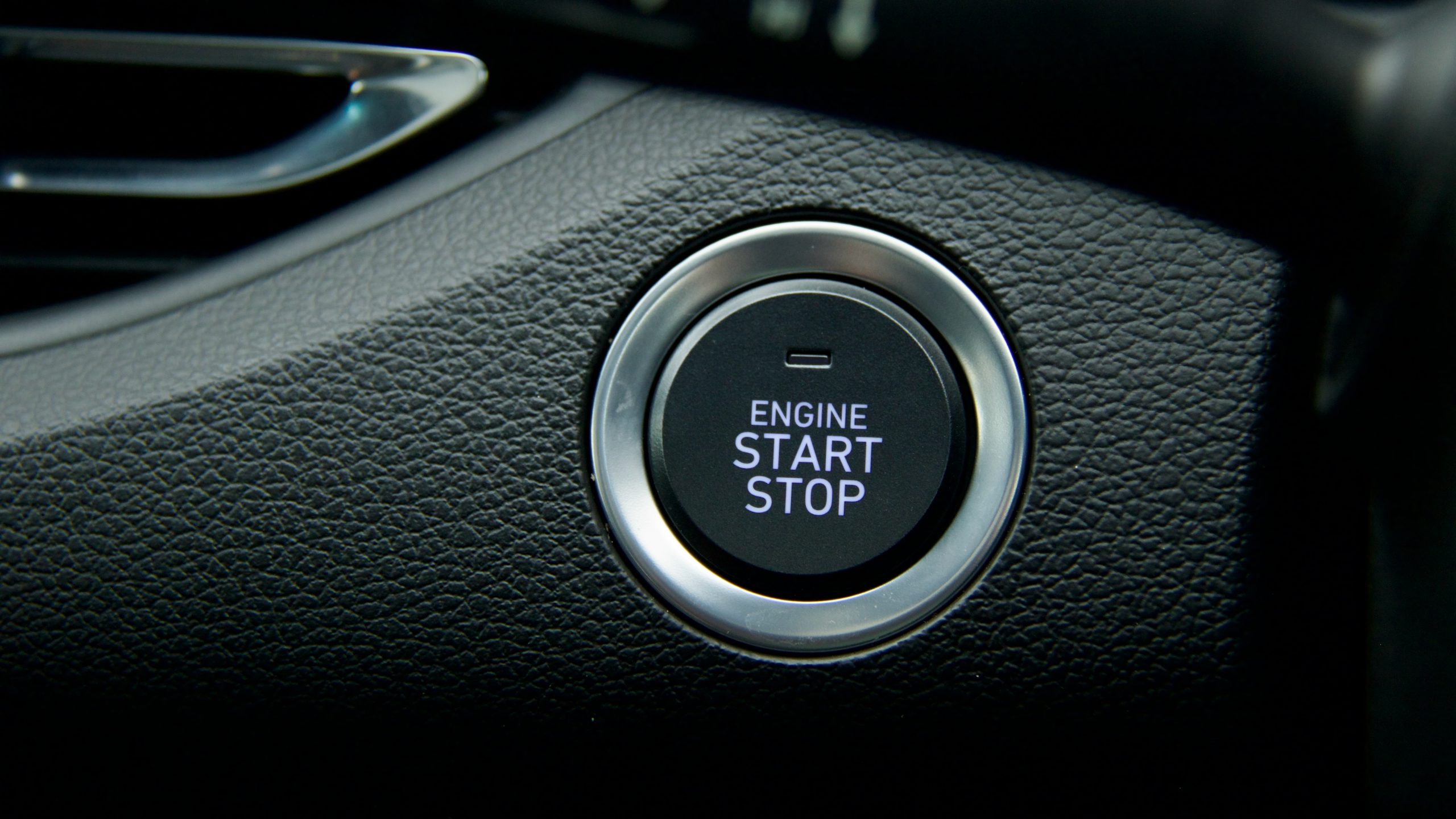
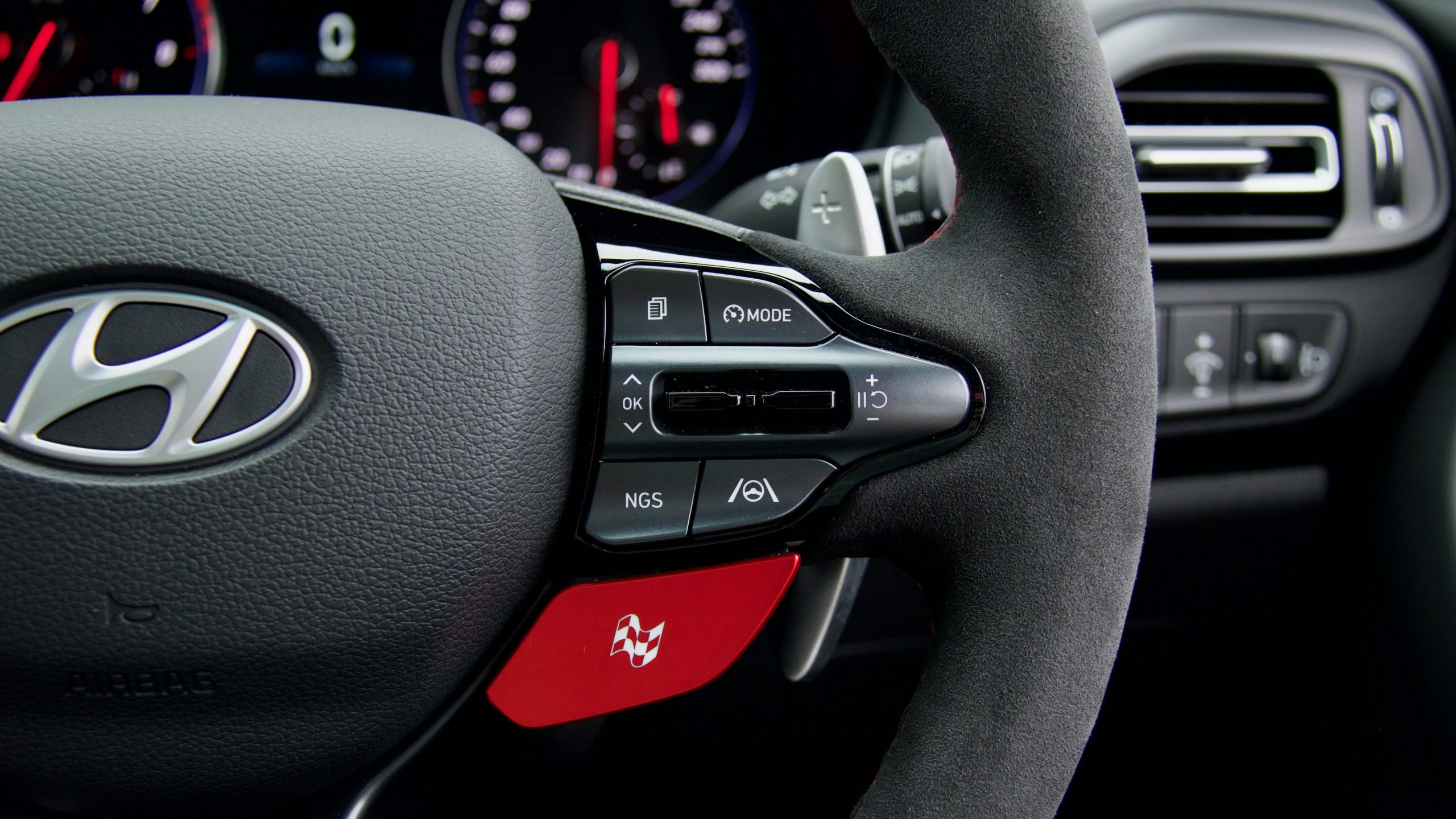
The transmission fitted to our test car is the optional eight-speed dual-clutch automatic. The shifts are crisp, the gearbox is intuitive and there is very little lag between gears. We would argue that this transmission is as good – if not better – than Volkswagen’s famed ‘DSG’ dual-clutch automatic transmission, as there is less of the loose feeling when taking off from a standstill compared with the DSG. It’s smooth and swift to change gears but is also comfortable in traffic and when starting on hills. Standard fit is a six-speed manual unit.
Power is sent to the wheels via a mechanical e-LSD, which can send power to each individual front wheel to get the best traction. This system works fantastically and very rarely will the i30 N fall into any understeer. Getting on the power past the apex is super rewarding, as the i30 N pulls you out at incredible speeds thanks to the impeccable grip from the bespoke Pirelli P Zero tyres.
There are five driving modes in the i30 N that change the engine’s performance, the e-LSD, shift perimeters, exhaust valves, suspension, stability control and steering. Hyundai offers you so much choice in how the i30 N drives and we really love that. The driving modes give the i30 N a dual-personality – N mode is hard, loud and raw, while on the other side, eco mode is quiet and comfortable.
The active exhaust on the 2023 Hyundai i30 N is one of the best parts about the i30 N as it adds so much character and drama to the driving experience. Choosing sport mode opens up the exhaust a little more and gives off a lovely deep growl when accelerating. But in this writer’s opinion, by far the best mode to hear the i30 N’s exhaust is in N mode. The exhaust opens up and gives off an angry and very performance-oriented sound. Past 4,000rpm in the rev range there are loud pops and crackles that give the car its character.
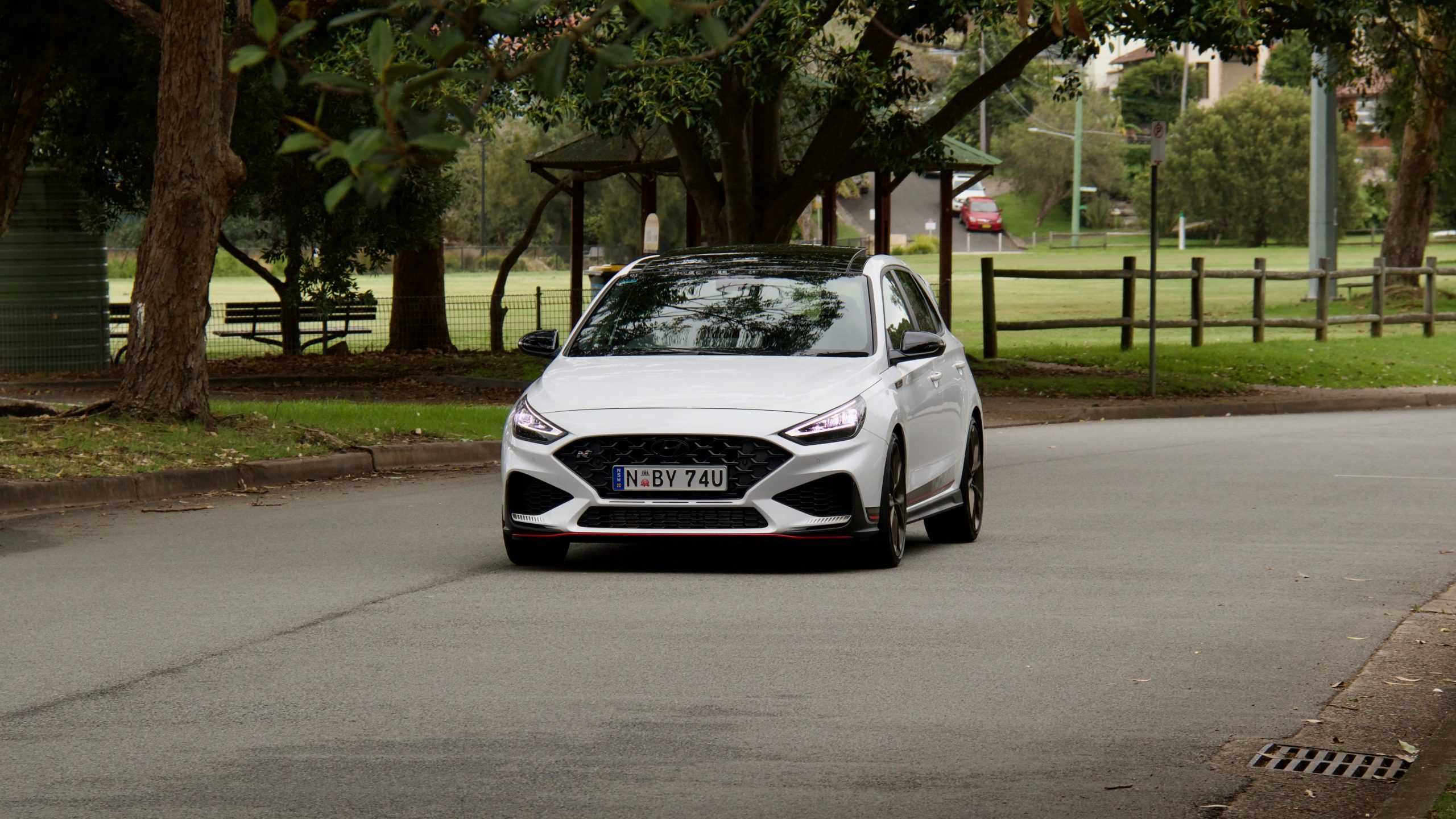
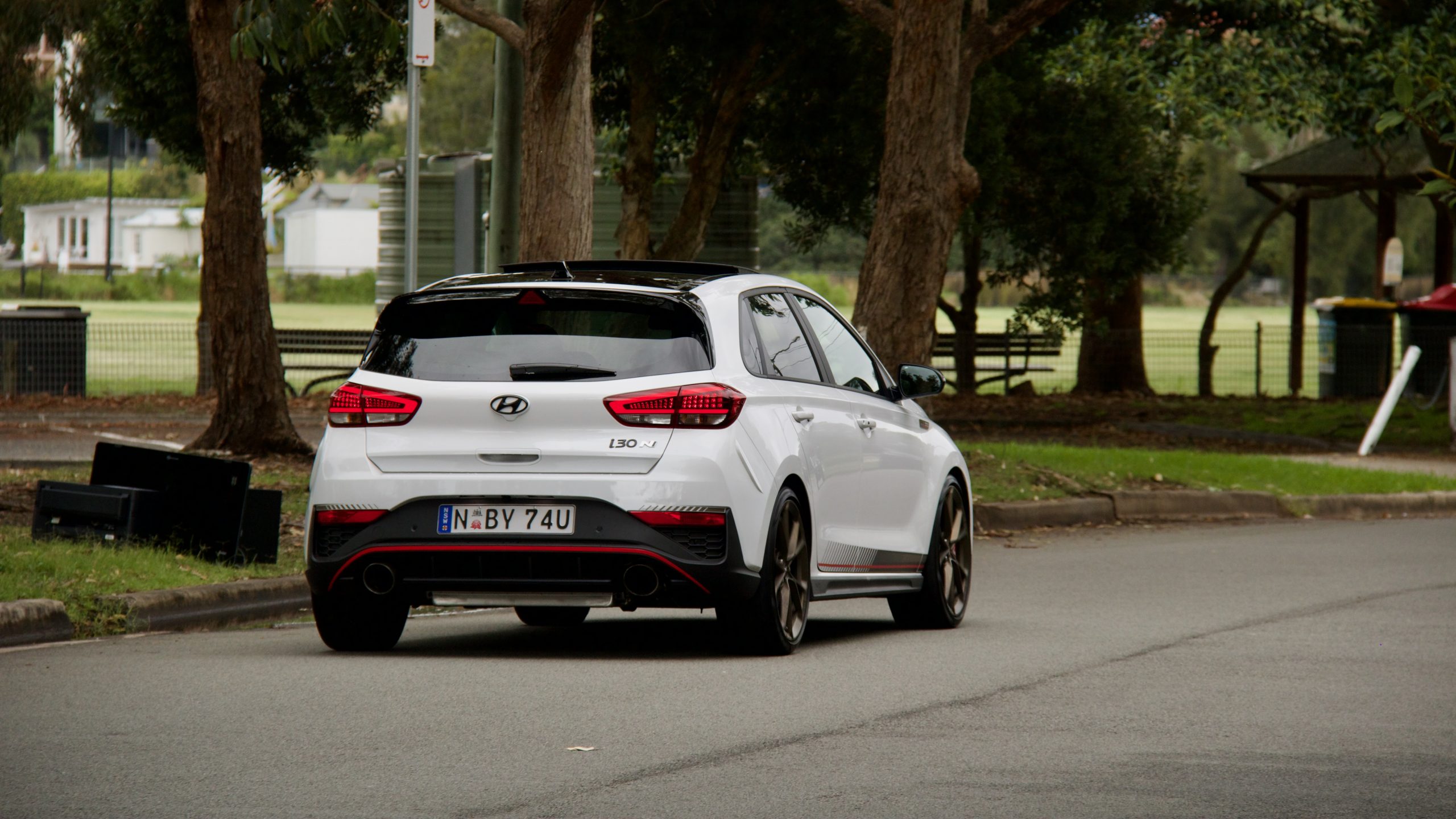
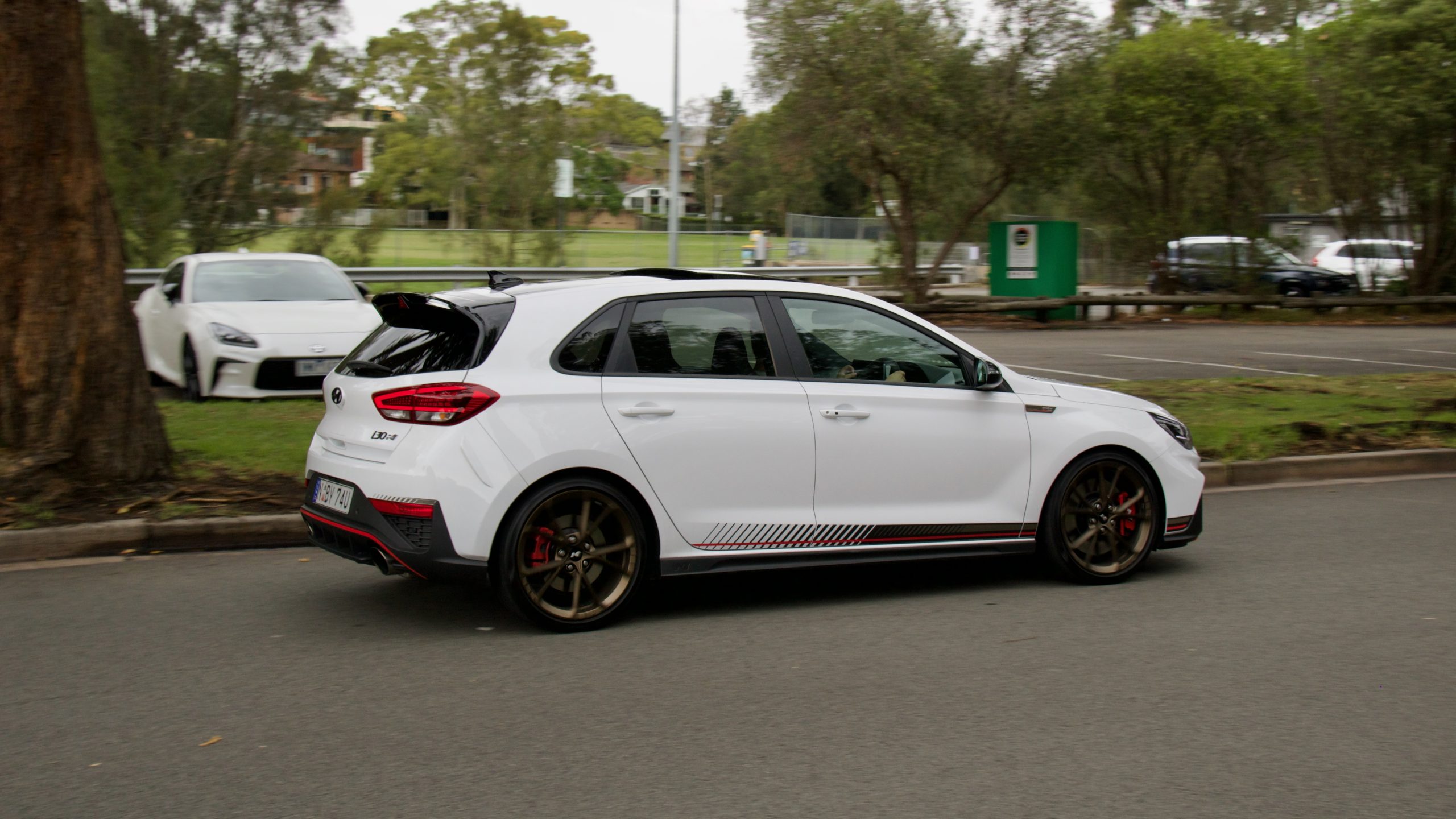
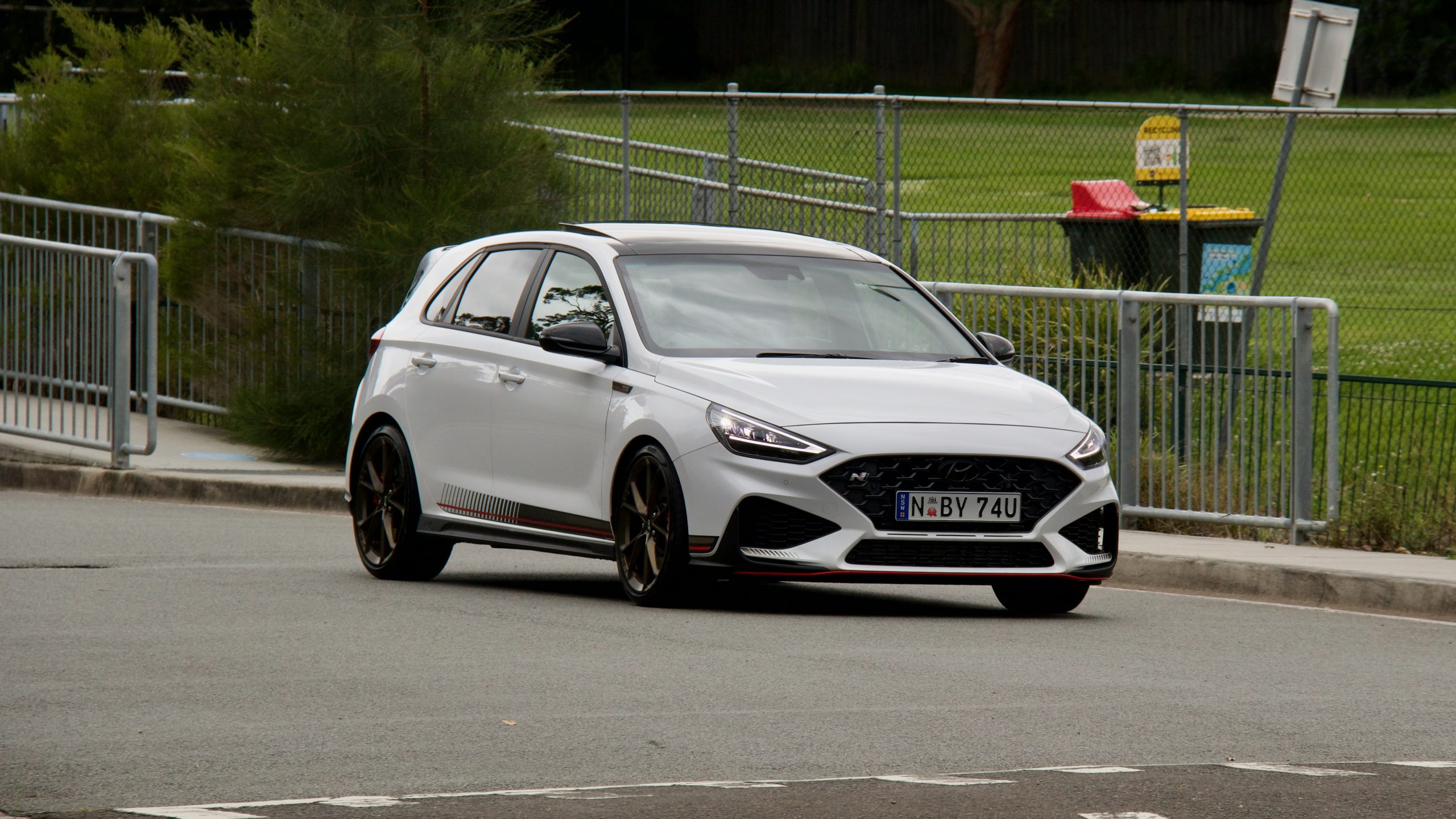
The claimed average fuel consumption for the 2023 Hyundai i30 N Drive-N fitted with either transmission is 8.5L/100km. Our time spent behind the wheel of the i30 N in urban and highway driving environments – even with more spirited driving – gave us a real world average fuel consumption figure of just over 10.0L/100km. Not too bad considering the level of performance and noise on offer.
Ride & Handling: 9/10
As we’ve found with the standard i30 N, it drives very well. The adjustable dampers do a great job of adjusting the ride to the driving mode you select. When choosing Eco and Normal modes, the ride is on the firmer side, but for a car with this much performance on offer, it is more than compliant. Putting the drive mode selector into Sport firms the ride up a little more, but again, it’s not uncomfortable. Putting the car into N mode firms the suspension up a lot more and driving on the streets in N mode is pretty uncomfortable. It’s a suspension setting left to the smoothest of roads or the track.
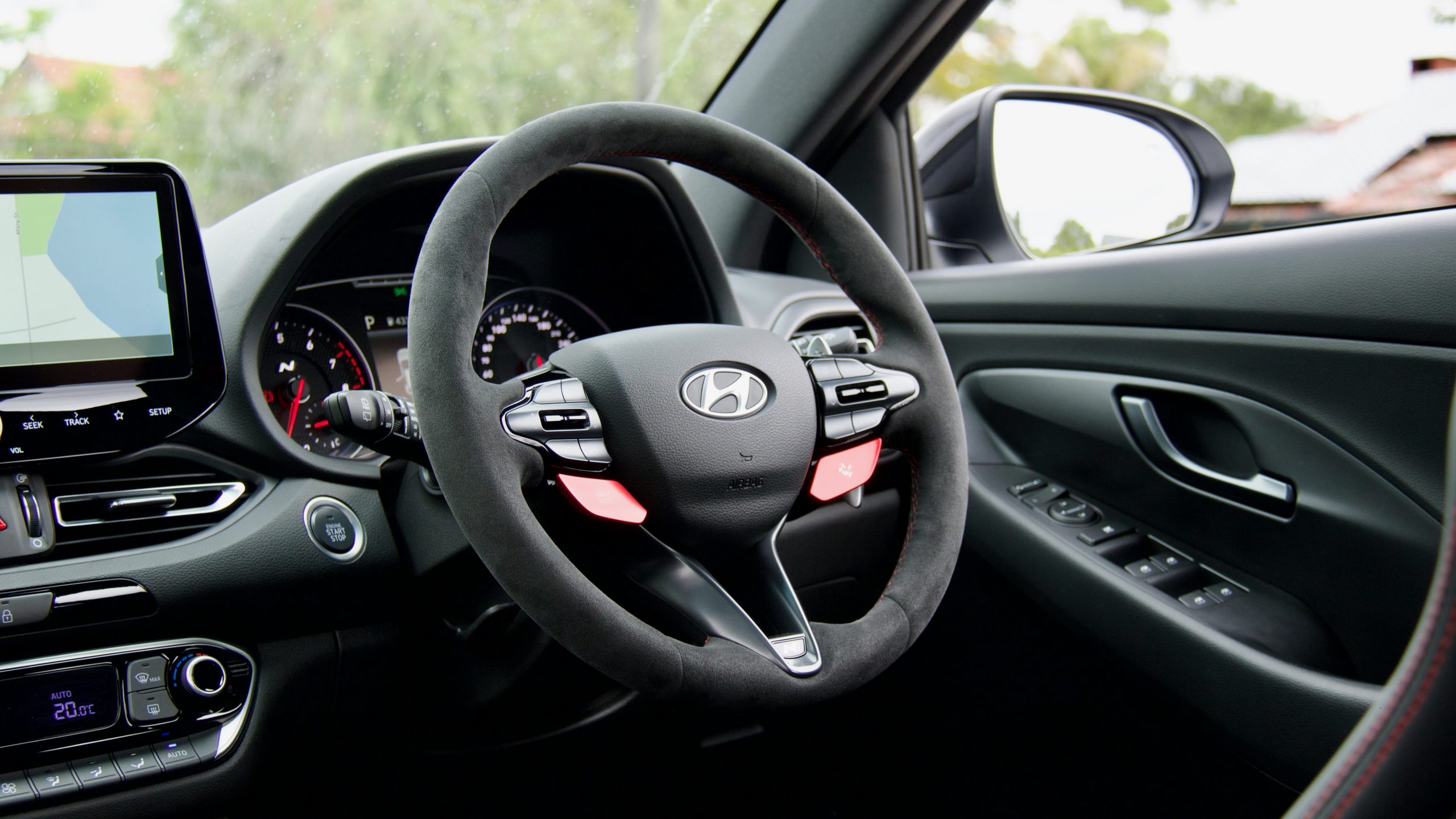
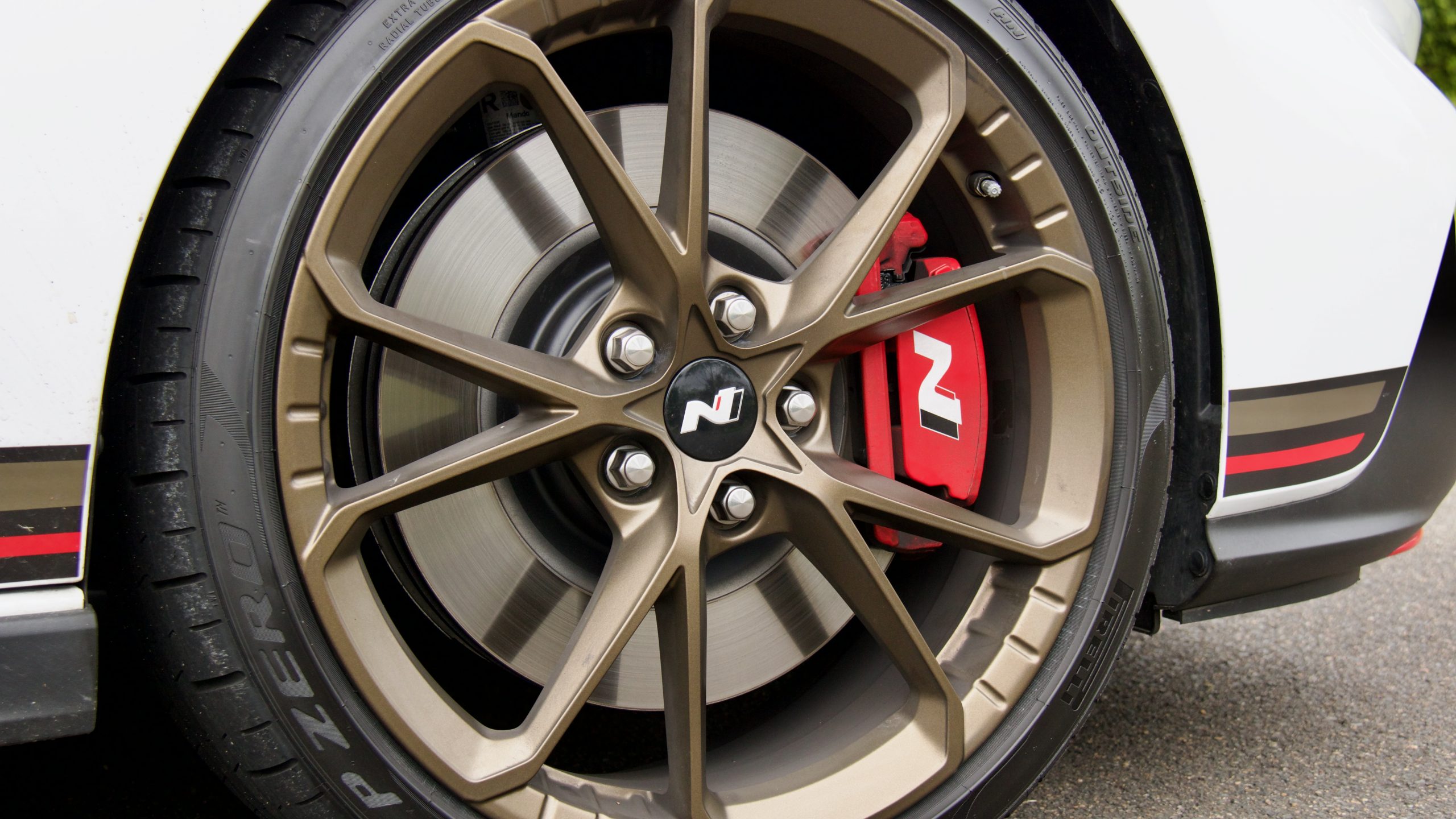
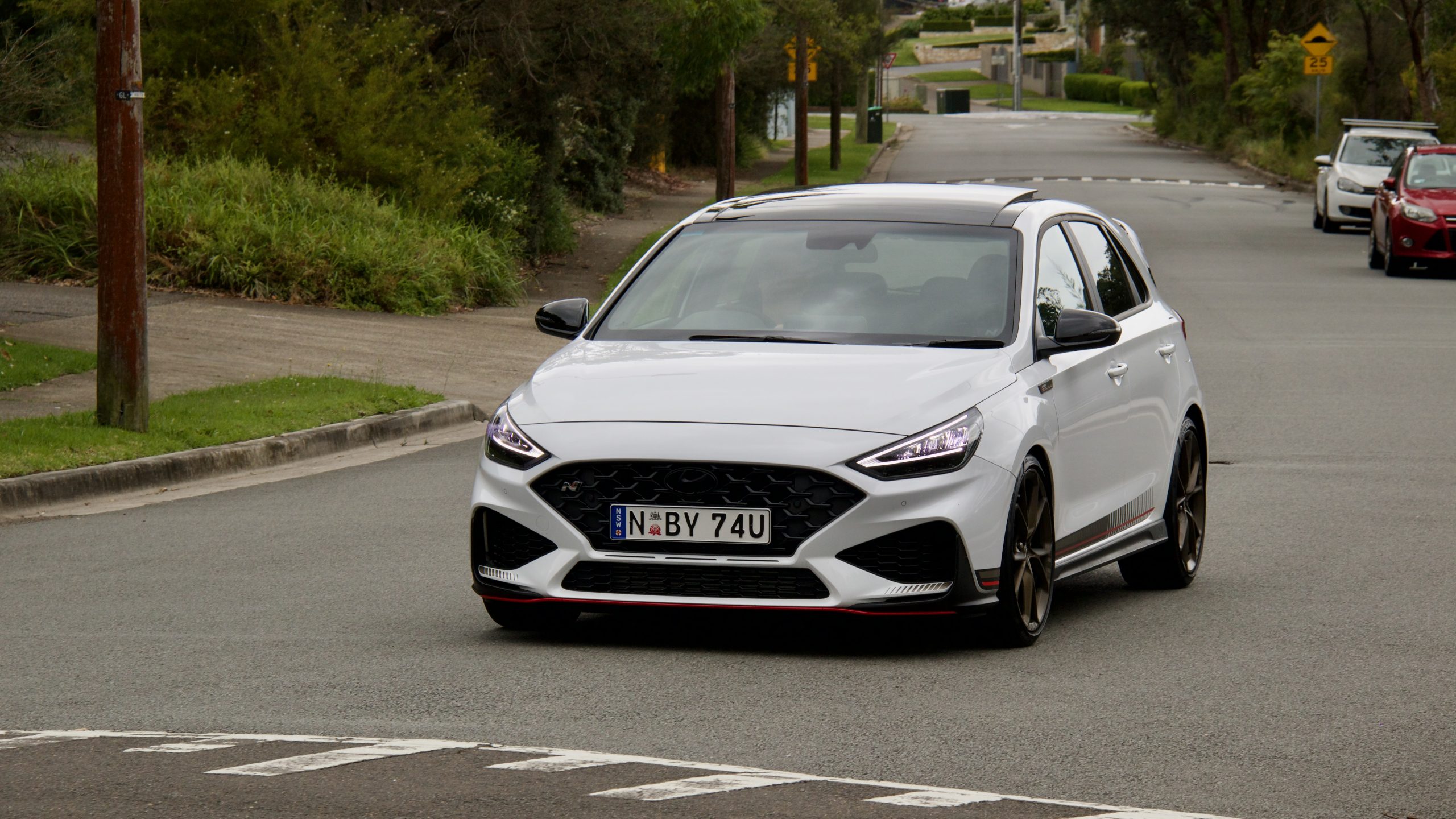
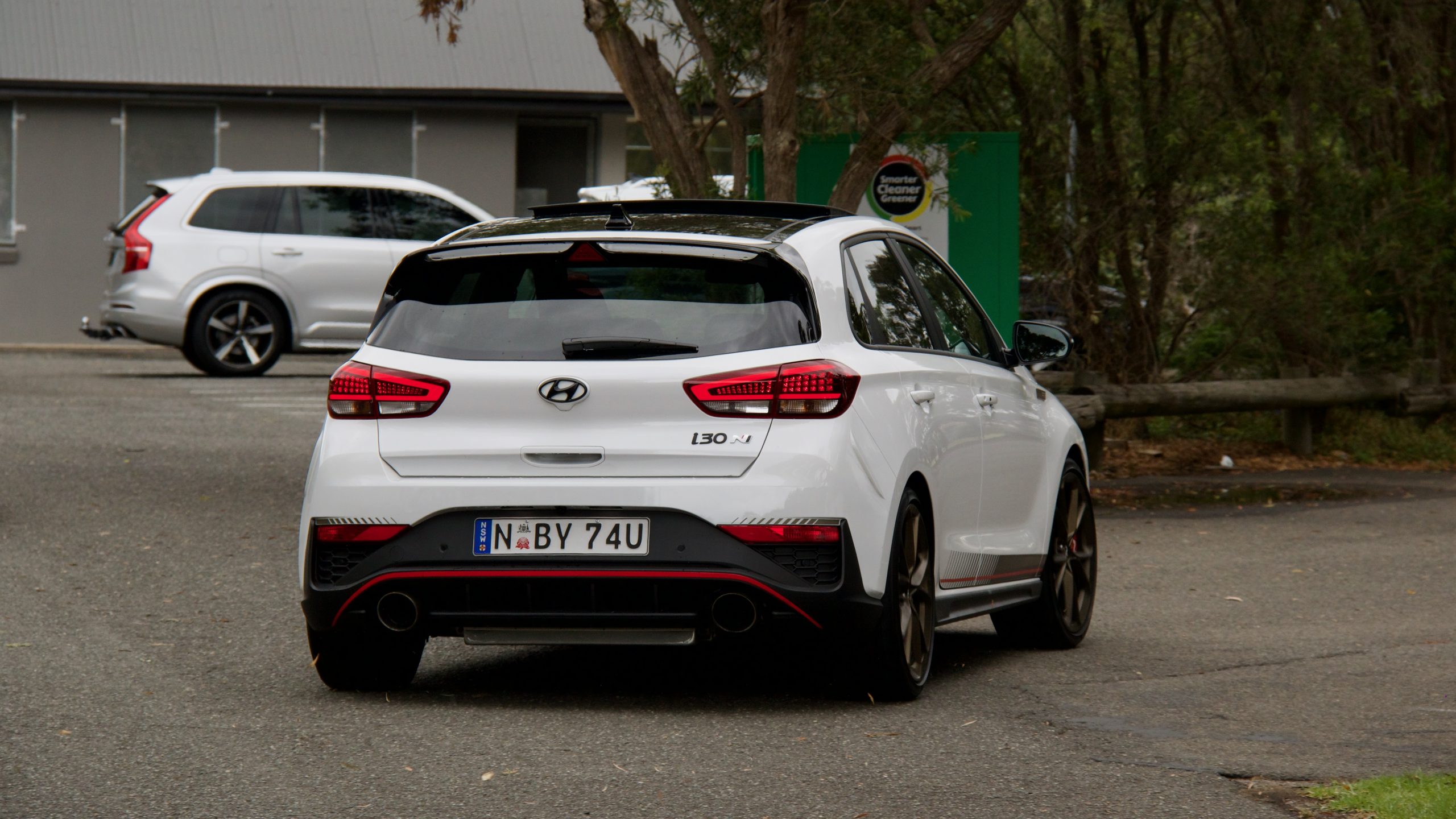
Hot hatches are known for having great handling ability and the i30 N is no exception. The i30 N, with its e-LSD and suspension set up, really is a car that encapsulates the hot hatch perfectly. There is no body roll at all and the i30 is remarkably smooth through corners, making it easy to position on the road. The steering of the 2023 Hyundai i30 N is a little on the heavier side even in Normal mode but this is to be expected in a vehicle of this caliber. The i30 N also comes with Pirelli P Zero tyres that have been specifically made by Pirelli for use in the i30 N and they grip the road quite well.
Interior & Practicality: 8/10
Sitting behind the wheel of the 2023 Hyundai i30 N Drive-N can be an underwhelming experience if you’re sitting idle. Other than the steering wheel, gear knob and bucket seats, there is nothing to differentiate the i30 N interior from the regular i30 range. The dashboard is identical and to put it honestly, rather bland – something like blue stitching (or red to match the drive-N aspects) or an N badge would liven it up a little bit.
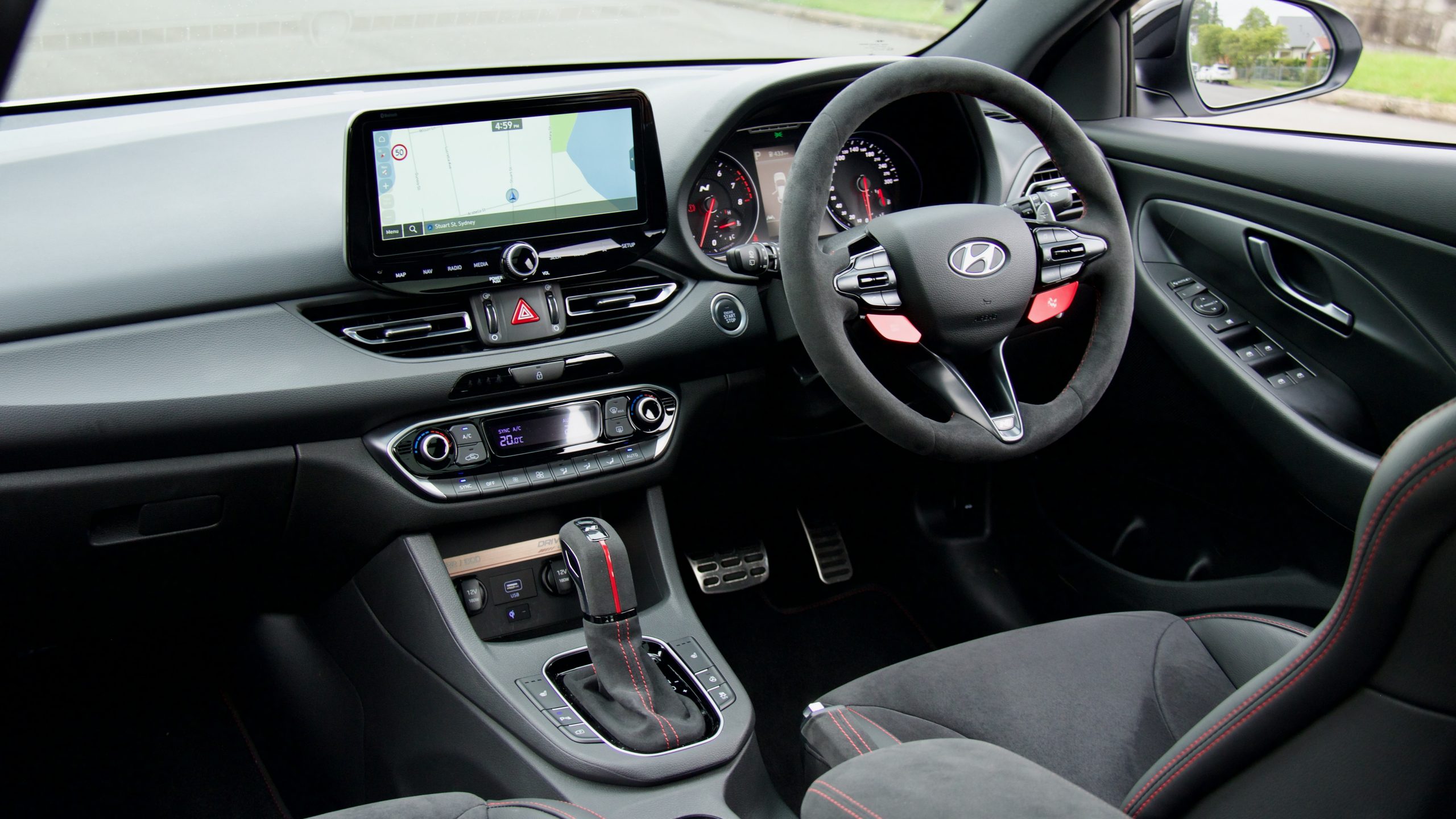
Other than the rather average dashboard, the rest of the interior is pretty good – the dials look great and are easy to gauge, though it would be nice to see the digital dials from the Kona N and i20 N used in the i30. The one-piece lightweight sports bucket seats are exceptionally good and hug you in all the right places, while there is also a good amount of adjustment as well so getting comfortable isn’t difficult. The steering wheel is thick and the drive select buttons are also large and easy to operate on the move.
The quality of the 2023 Hyundai i30 N Drive-N’s interior is what we would call adequate. There are some hard plastics on the lower dashboard and door panels, but there are also some soft touch points such as the top of the dashboard and door tops (including the rear). The leather and alcantara on the seats are very soft too and are good quality.
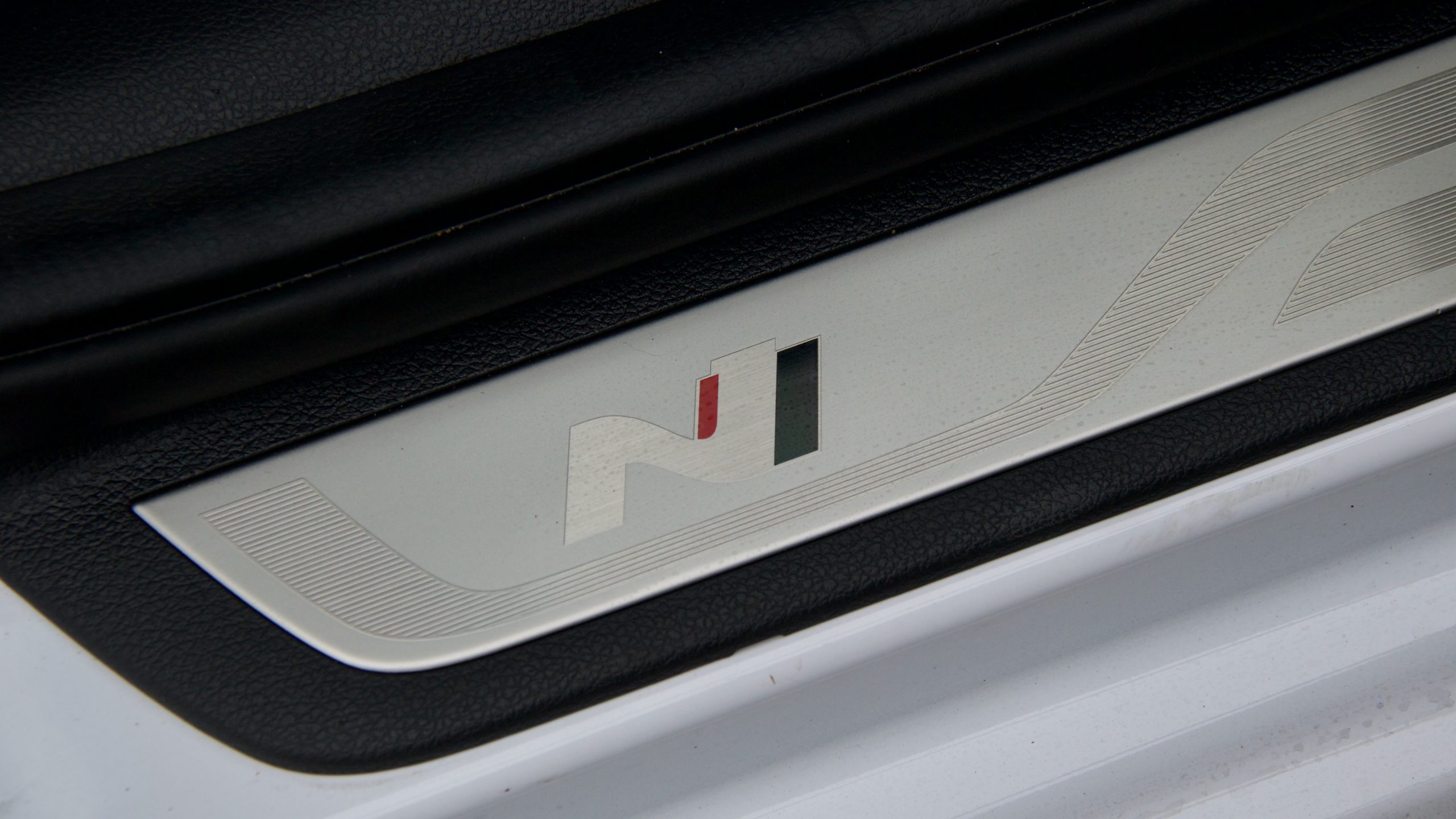
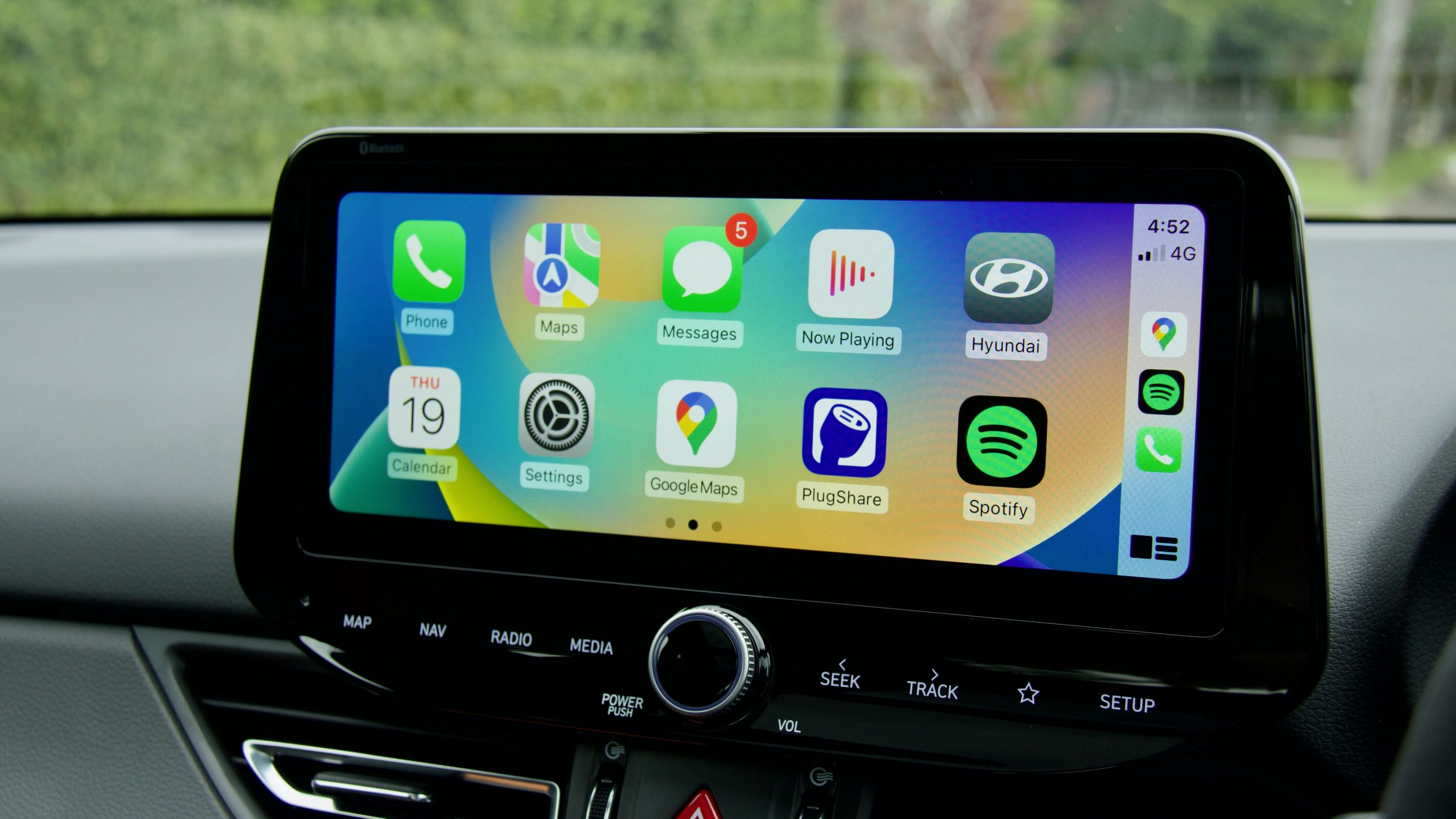
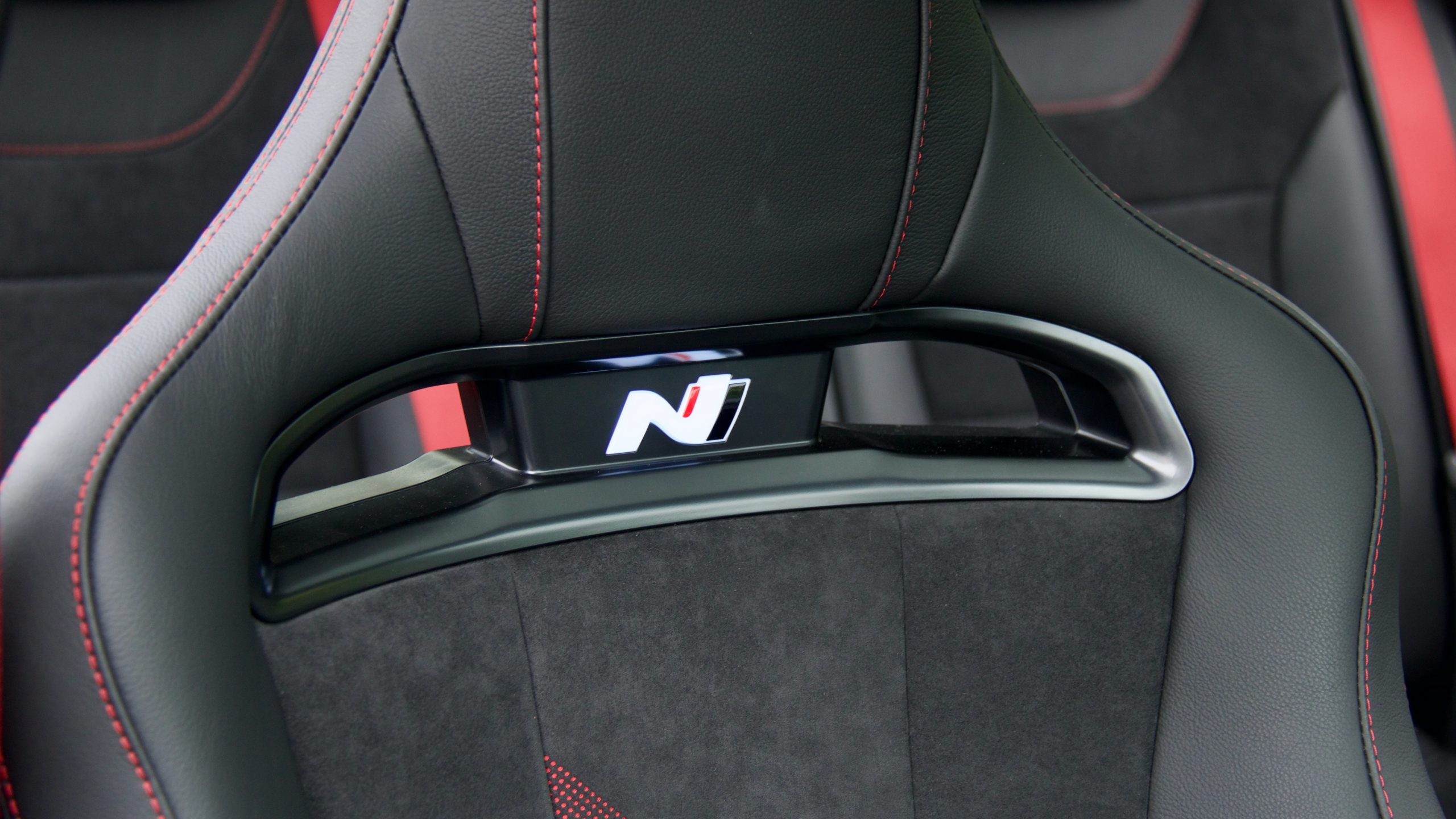
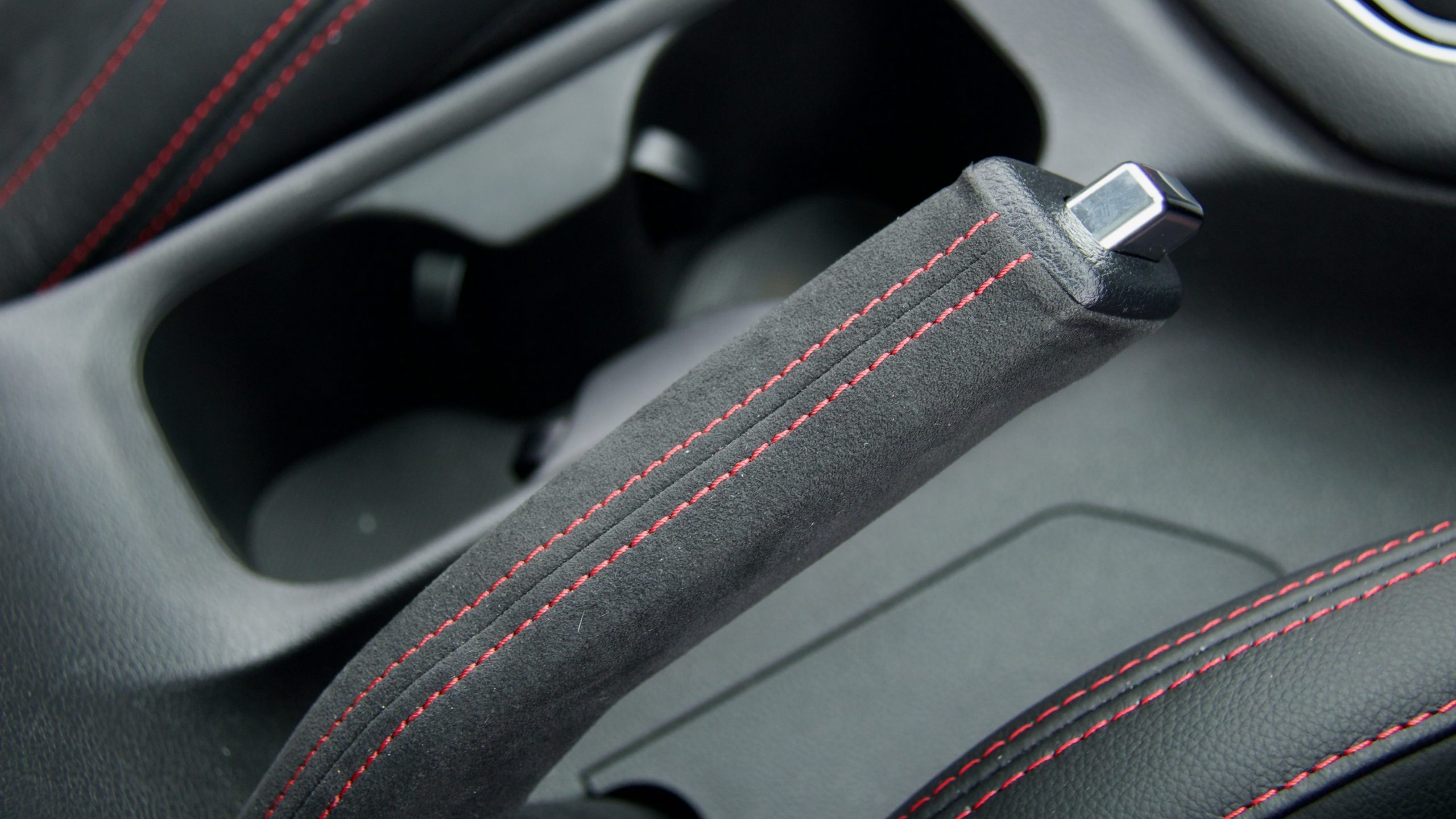
The storage in the i30 N is good with reasonable door pockets, a deep glovebox and centre console and a wireless charger in front of the gearbox to store your phone, while there is also a place next to the manual handbrake to store a wallet or keys and there are also two cupholders in the centre console.
The 10.25-inch touchscreen in the 2023 Hyundai i30 N’s cabin is easy to use and high quality. It features wired Apple CarPlay and Android Auto, which looks fantastic and is easy to set up and use. The navigation system is also very good as it has live traffic reporting, but we would personally just use the smartphone mirroring via a smartphone to set maps. There is also an N screen that will show the custom mode settings as well as a boost gauge and other performance screens. It may not be as modern as the system in the Golf R but it is easier to use.
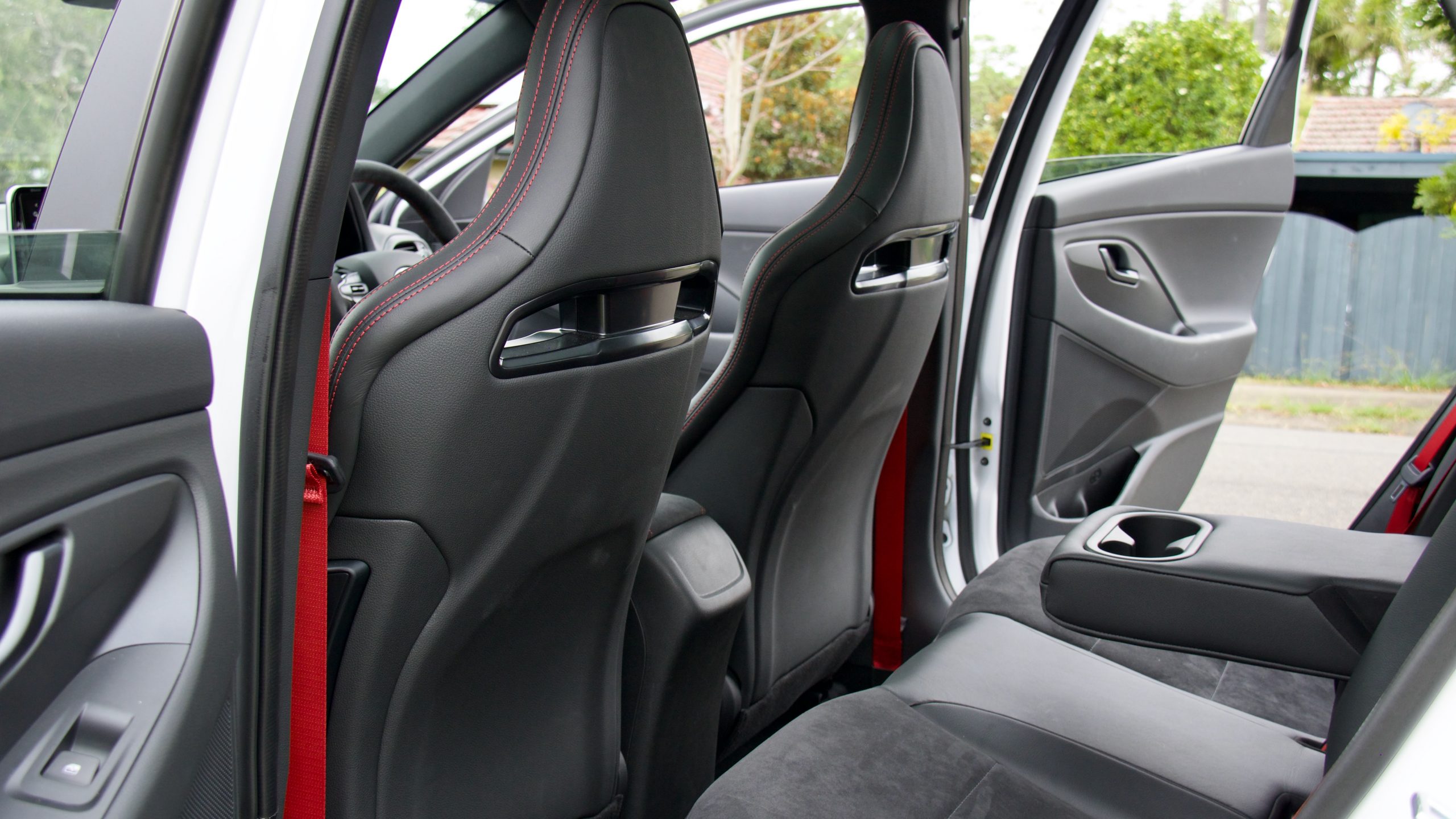
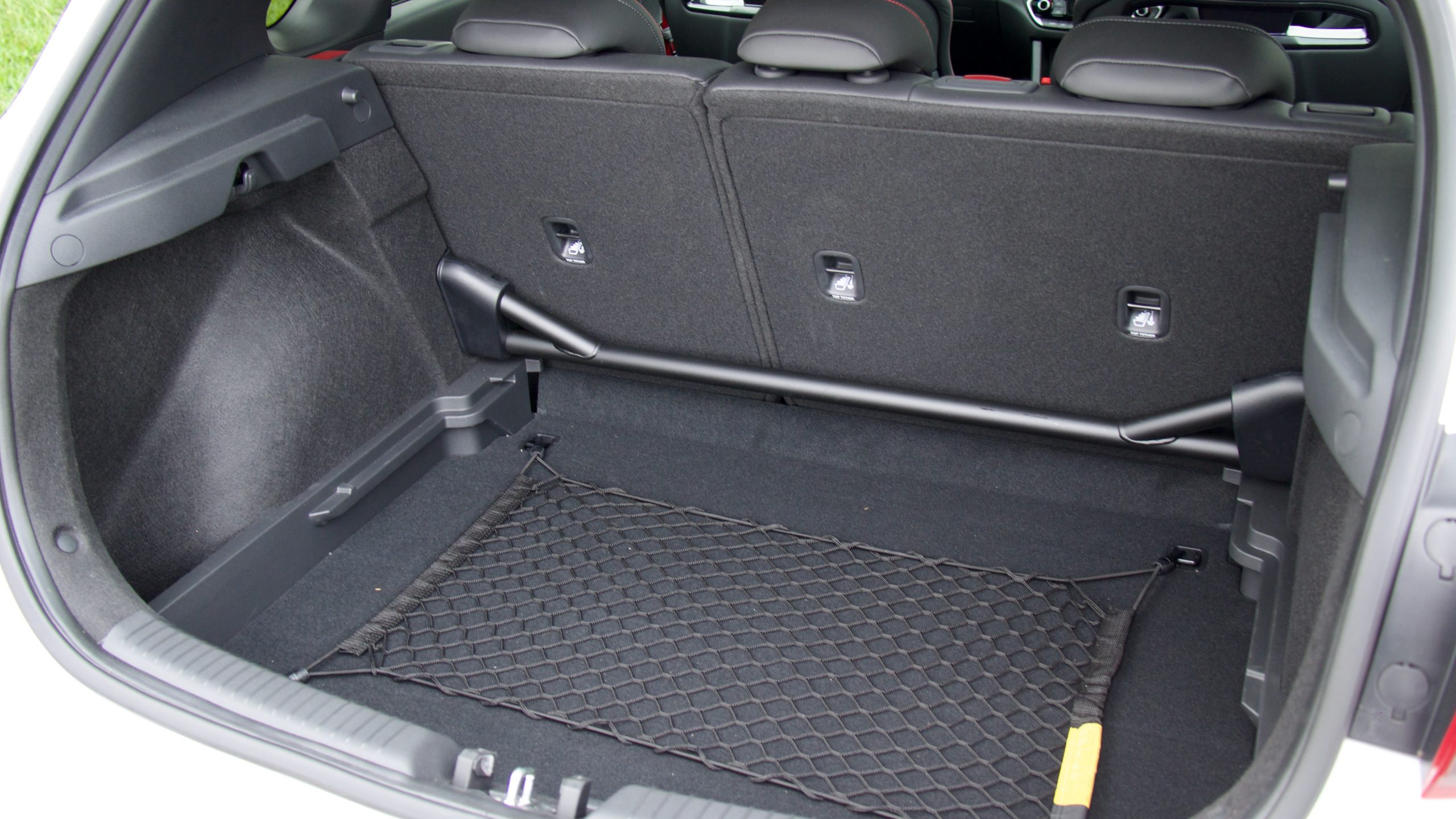
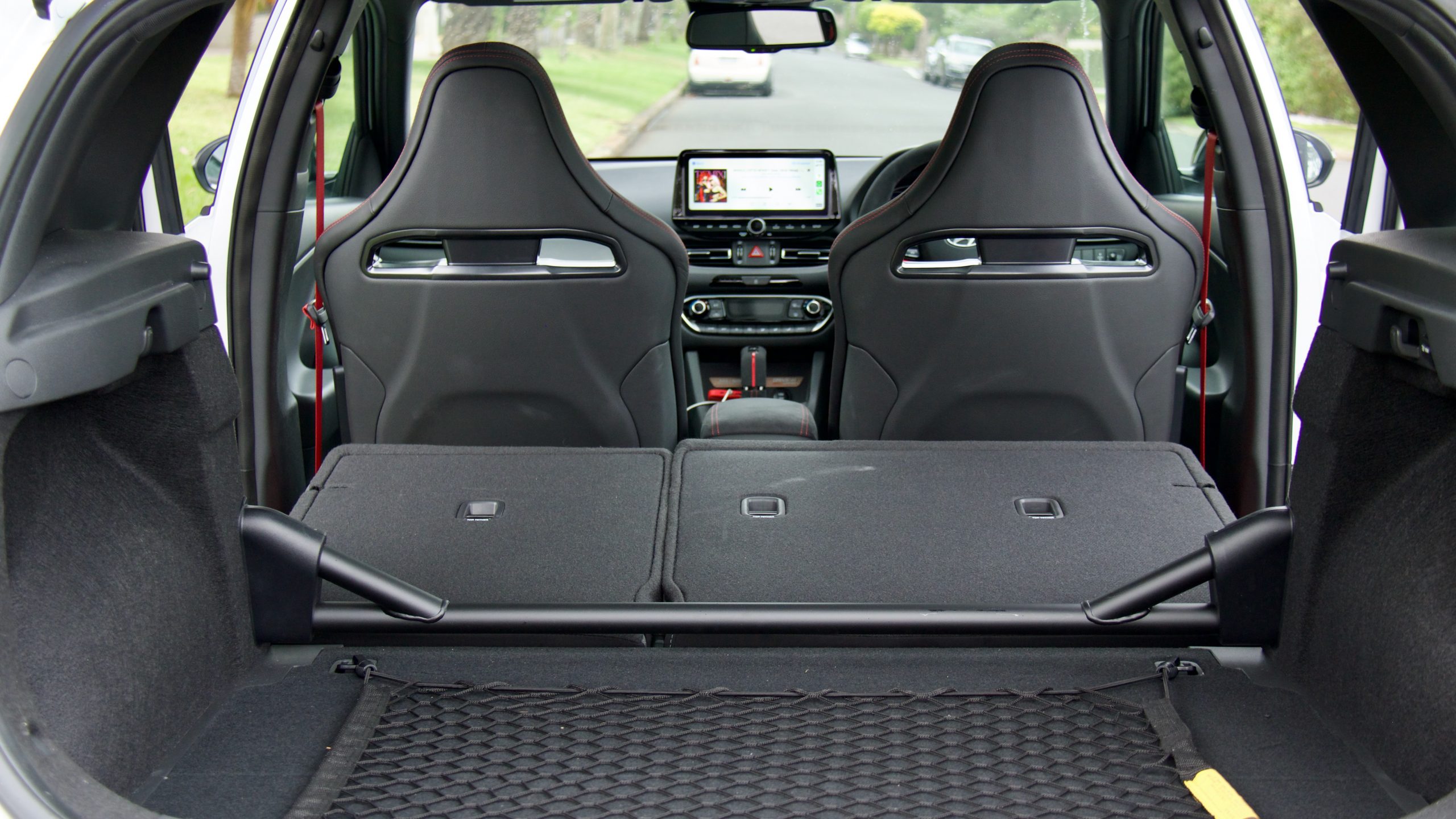
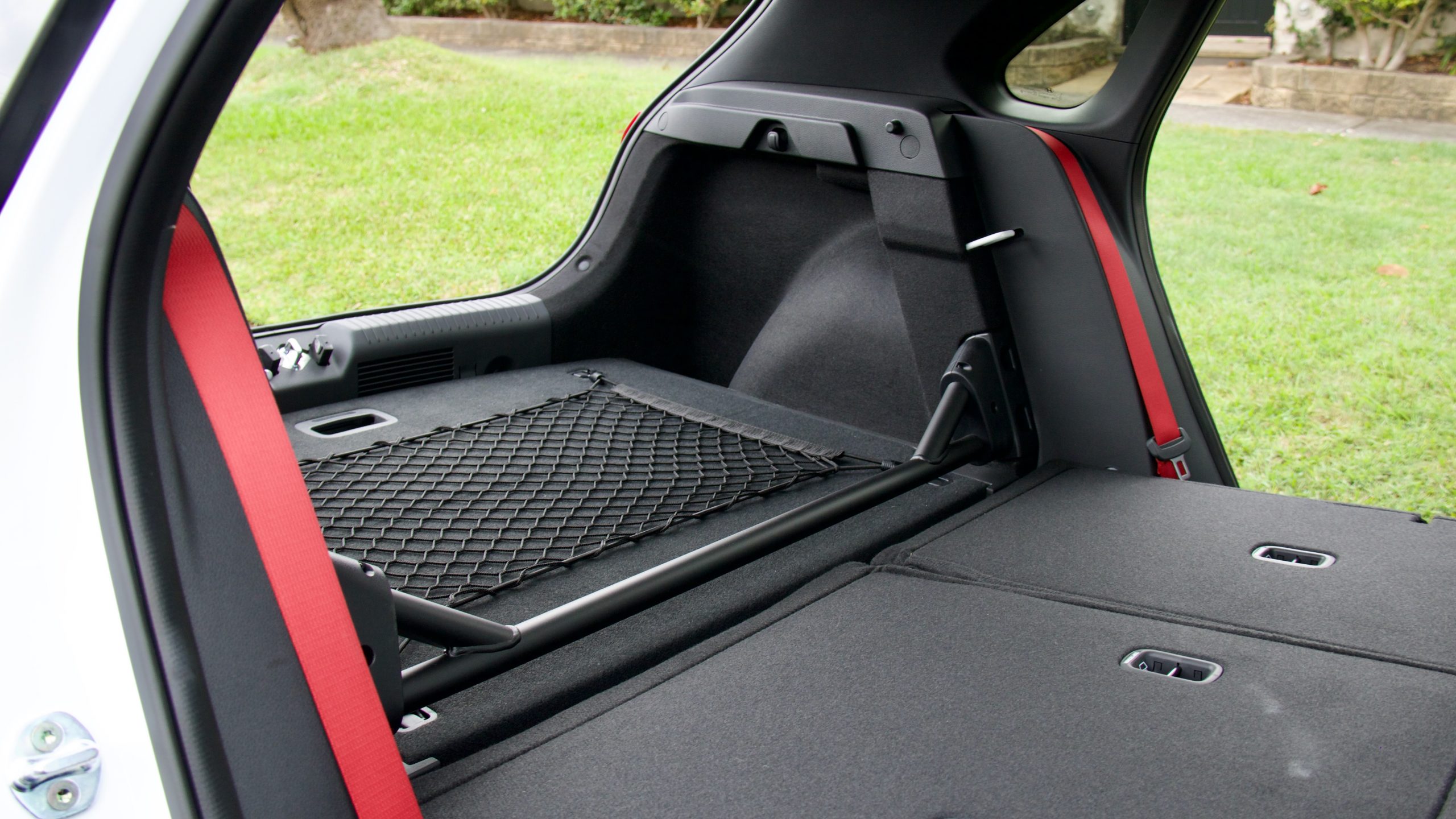
The rear seats in the i30 N are comfortable and the space is roomy for the class. There is also a centre arm rest with two cup holders and door pockets, but no charging ports or air vents – the latter features across the regular i30 range, but not the N unfortunately. The rear leg, head and shoulder room would be described as adequate and you can easily fit two adults there.
The 2023 Hyundai i30 N Drive-N has a 381-litre boot which is slightly larger than the 374L boot in the Golf R. Folding the rear seats down in the i30 opens this space up to 1,247L – beware that can be difficult due to the removable structural braces, though. There’s also some side storage, a boot net, a dual-level boot floor and a space saver spare wheel underneath the boot floor.
Service & Warranty: 8.5/10
The 2023 Hyundai i30 N Drive-N comes with the brand’s five-year/unlimited kilometre warranty, which is the same length of warranty offered on the Golf R, and GR Corolla. Hyundai will not void your warranty for taking the i30 N onto a racetrack too, which is quite rare. The i30 N also comes with 12 months of roadside assist which is extended at every scheduled dealer service for the lifetime of the car.
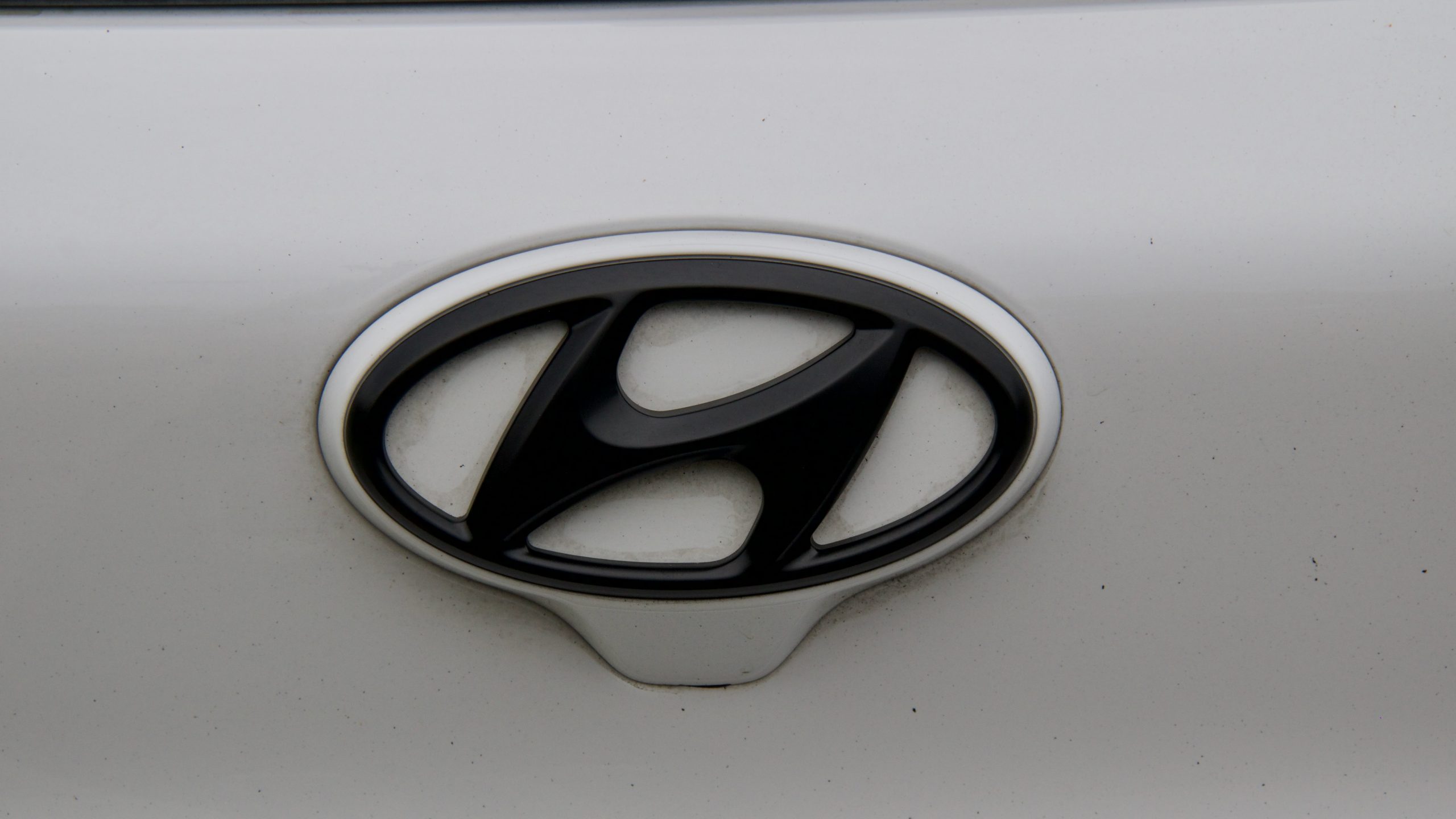
Servicing the i30 N comes around every 12 months or 10,000km, whichever comes first. This isn’t as long as the 12 month/15,000km intervals of the Golf R. The cost of servicing the i30 N over the span of five years or 50,000km is $1,675 ($335 per service). The Volkswagen Golf R will cost $4,056 over the same period of time which is more than double the cost of the i30, but you can also travel a further 25,000km in that time due to its longer servicing intervals.
2023 Hyundai i30 N Drive-N DiscoverAuto Rating: 8.5/10
The 2023 Hyundai i30 N Drive-N is a special edition that is a little underdone. We love the interior changes to the car over the regular i30 N Premium, but the decals seem a little unnecessary. We also don’t love that it is only a superficial special edition with no changes to the drivetrain. However, that being said, the Drive-N is based on the already fantastic i30 N, so you will not be disappointed.
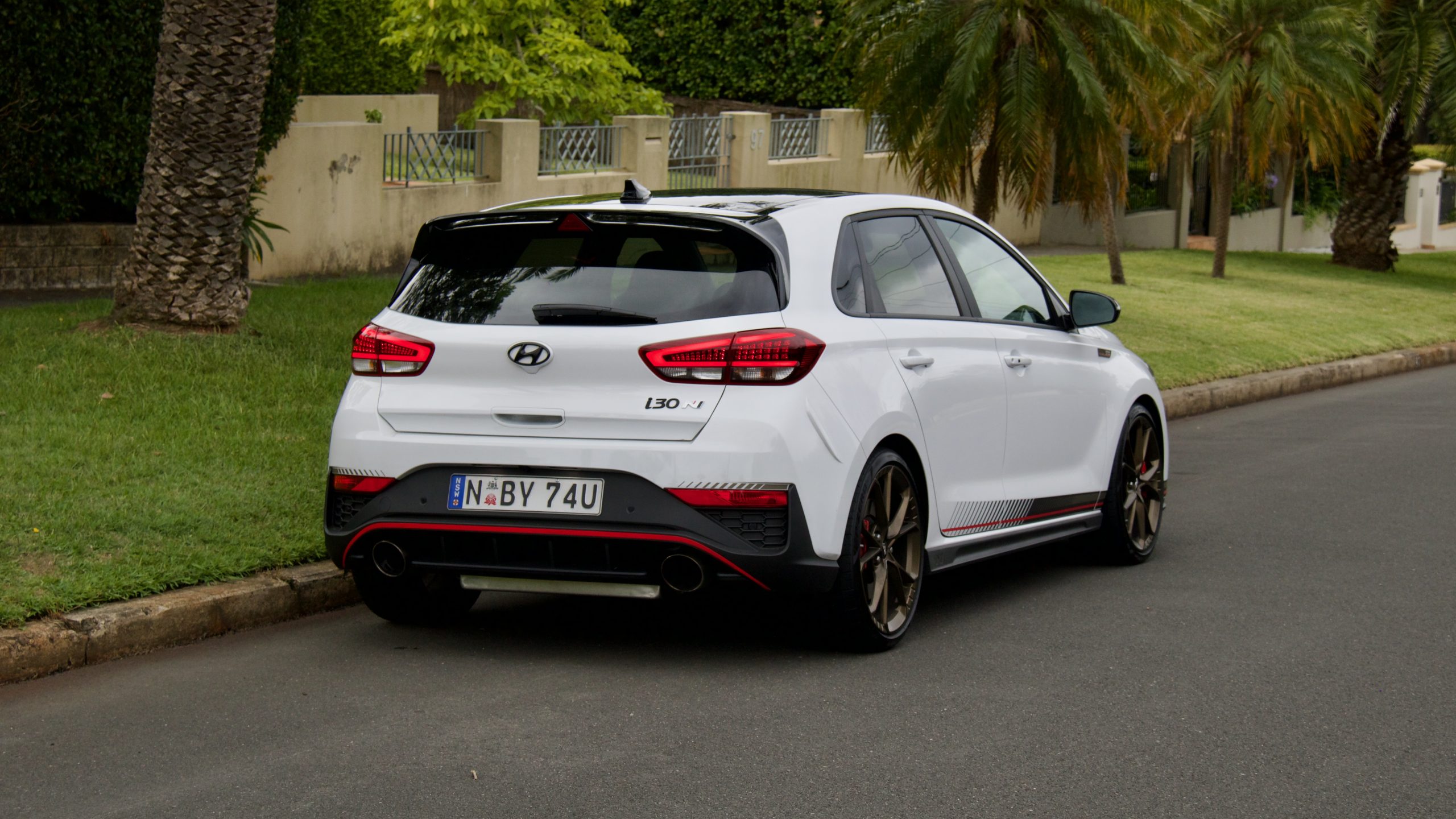
Would we buy the Drive-N over the regular N Premium? The simple answer is no as we personally do not see the extra benefit (apart from having a numbered vehicle) over the regular model. We do love the bronze wheels and alcantara interior elements but for us it’s not worth the extra $4,000 spend. But should you buy an i30 N? 100 per cent yes – it’s an excellent all-rounder hot hatch that we’d recommend one million times over.
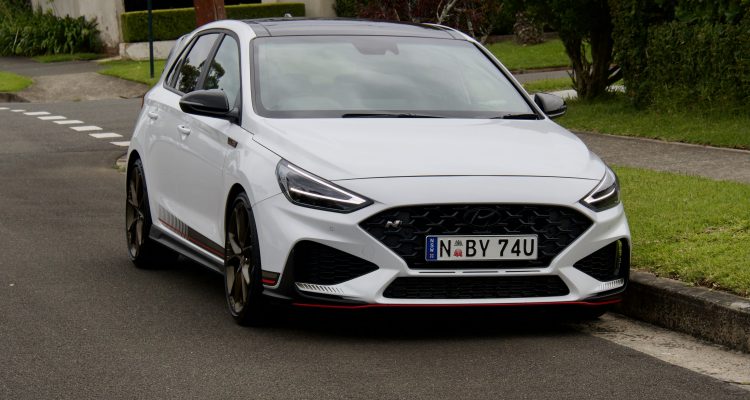
Leave a Reply